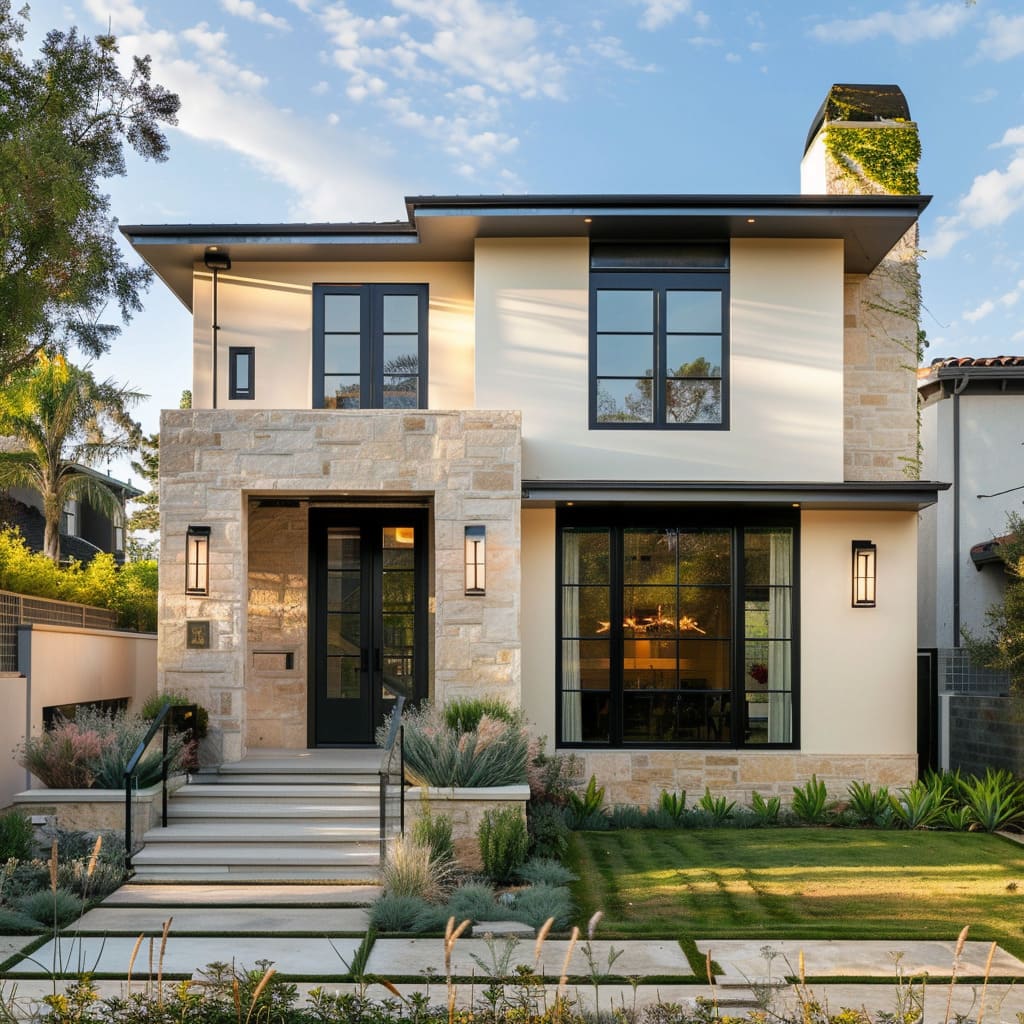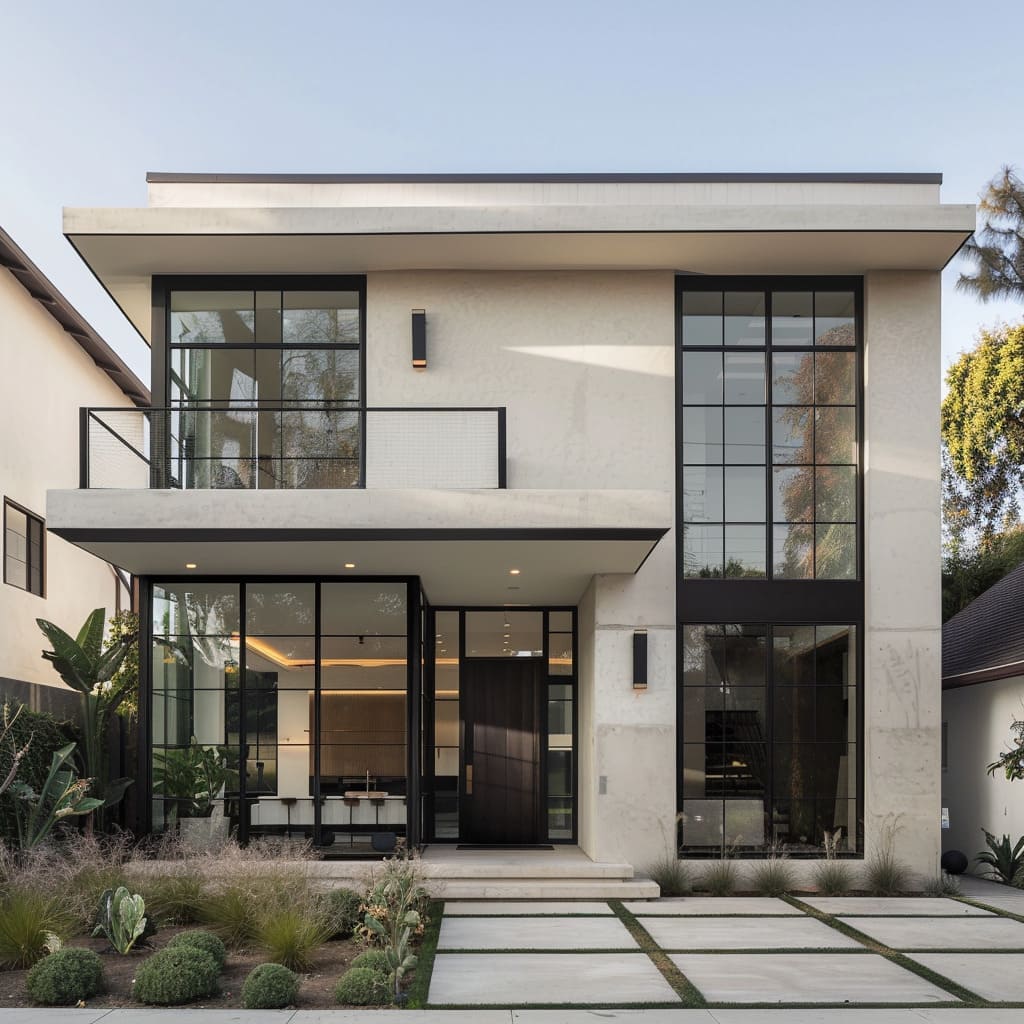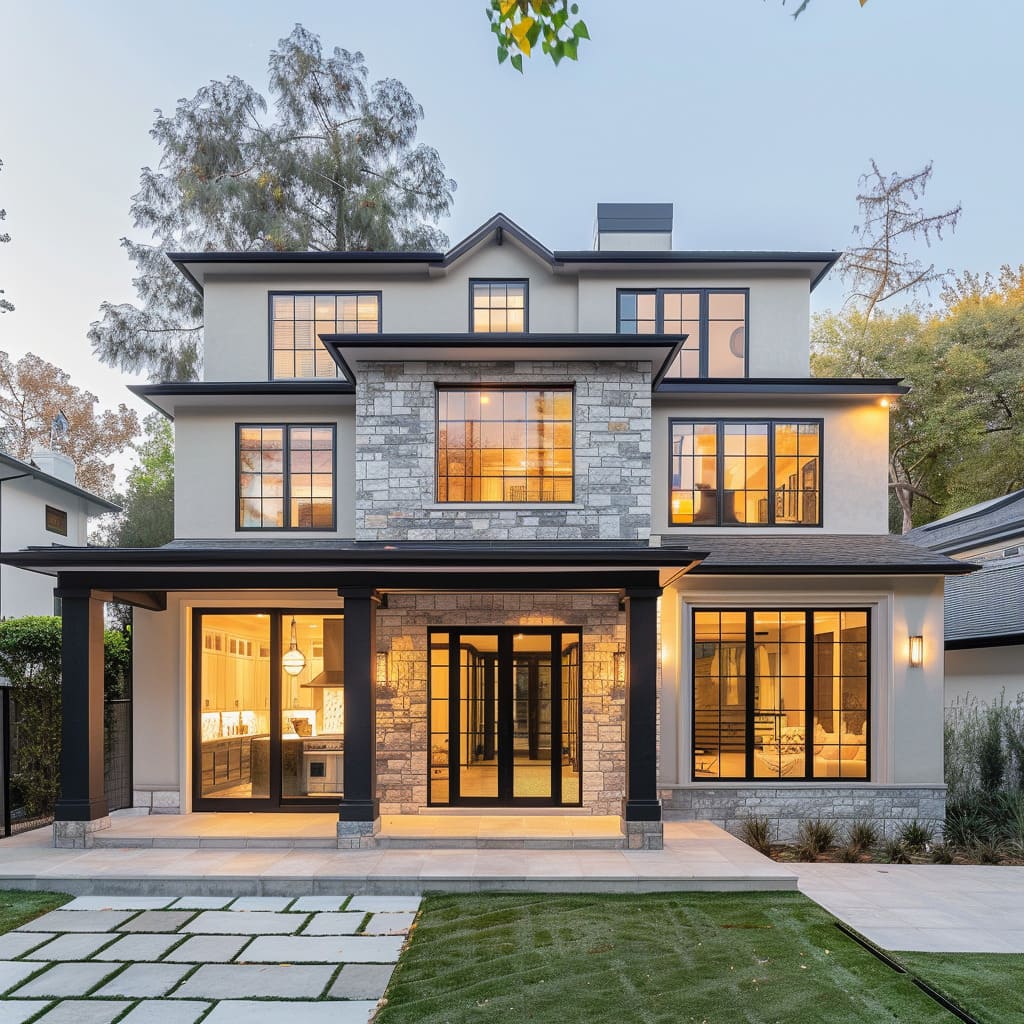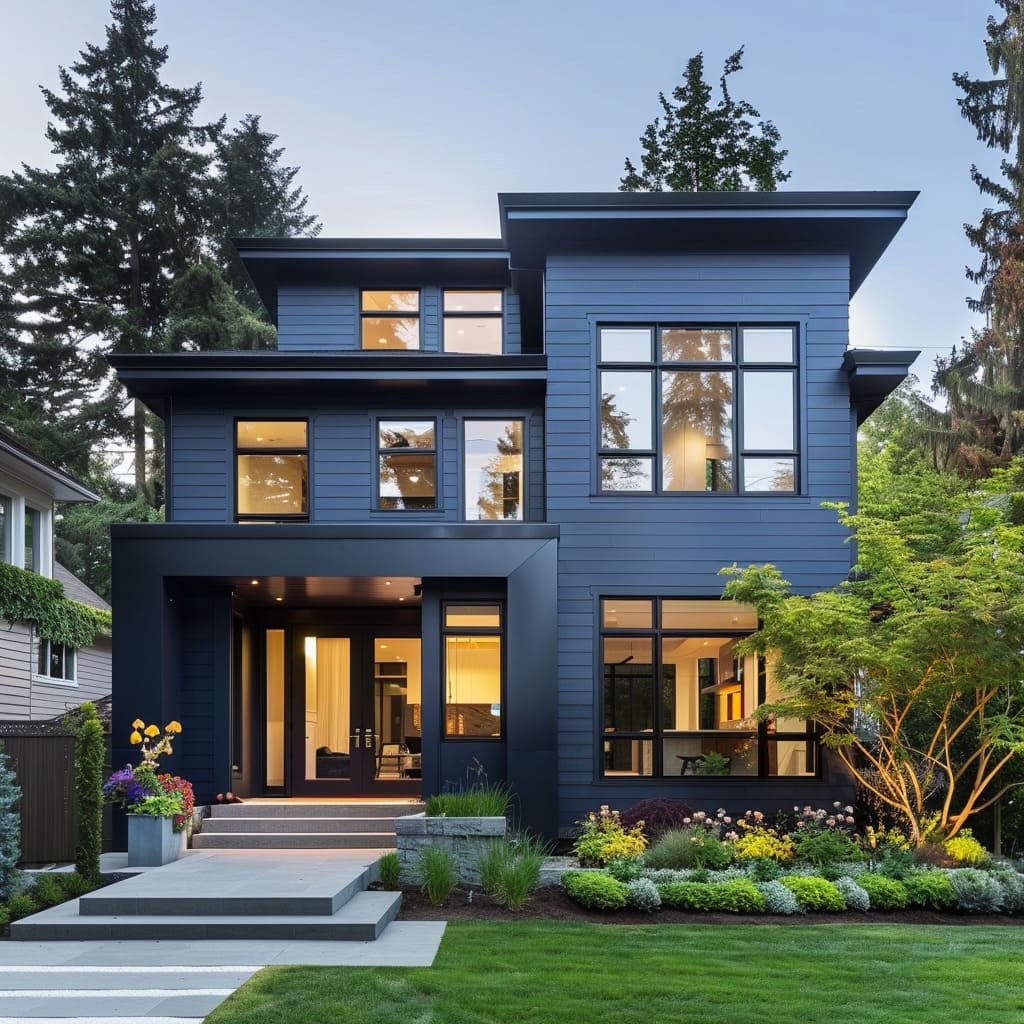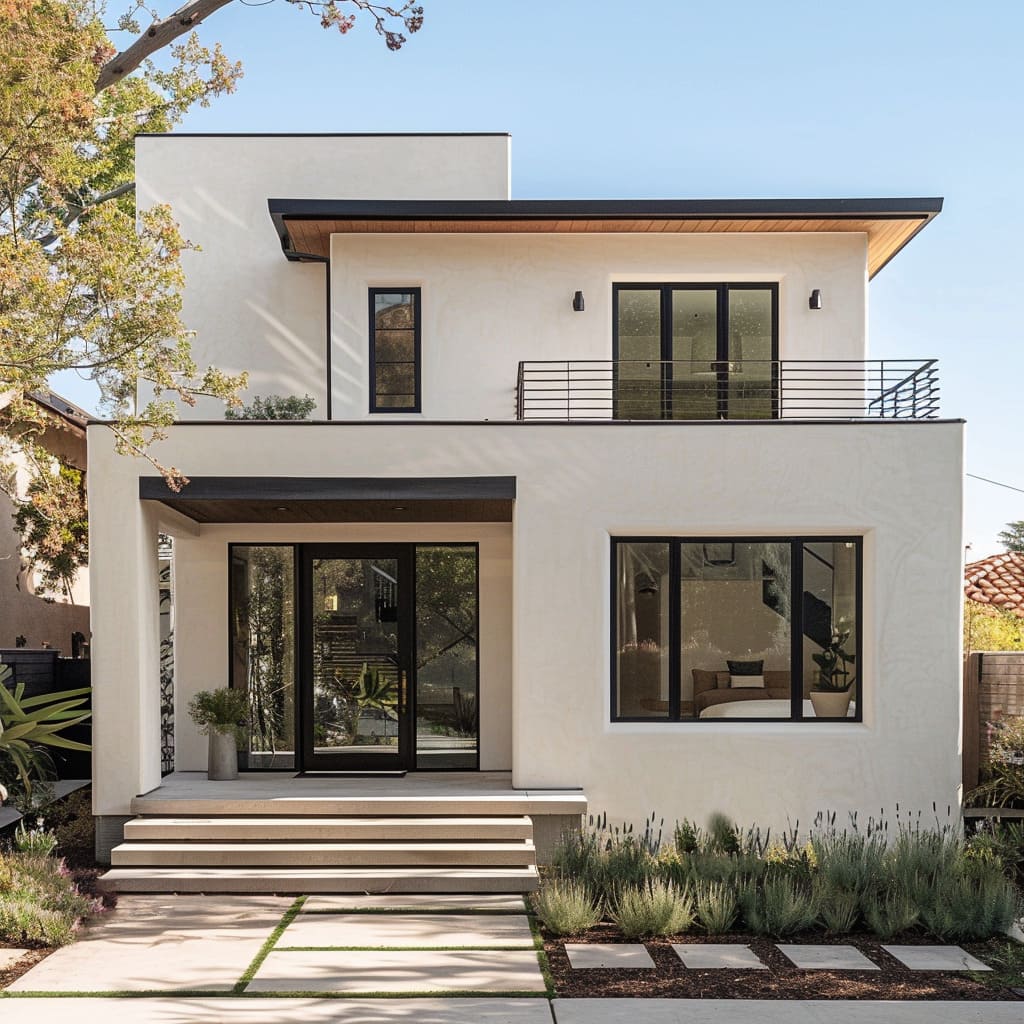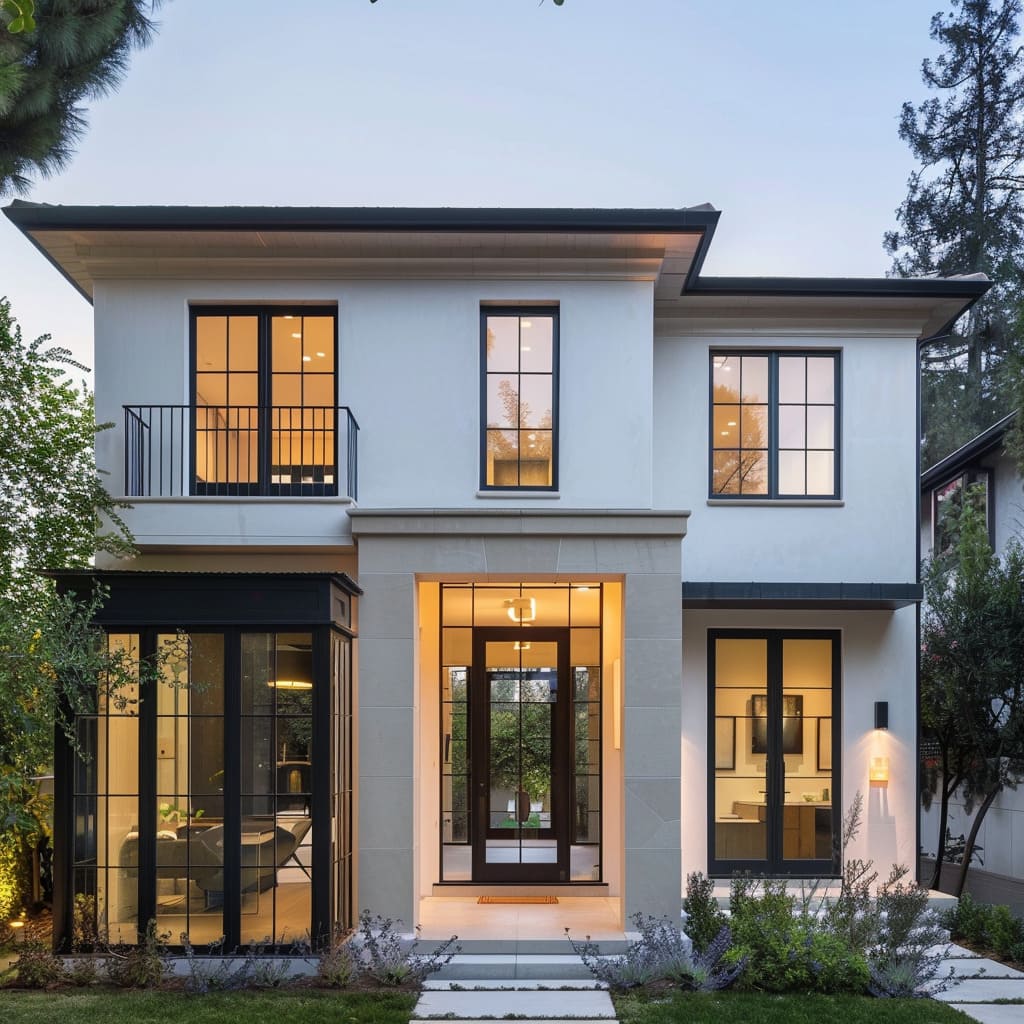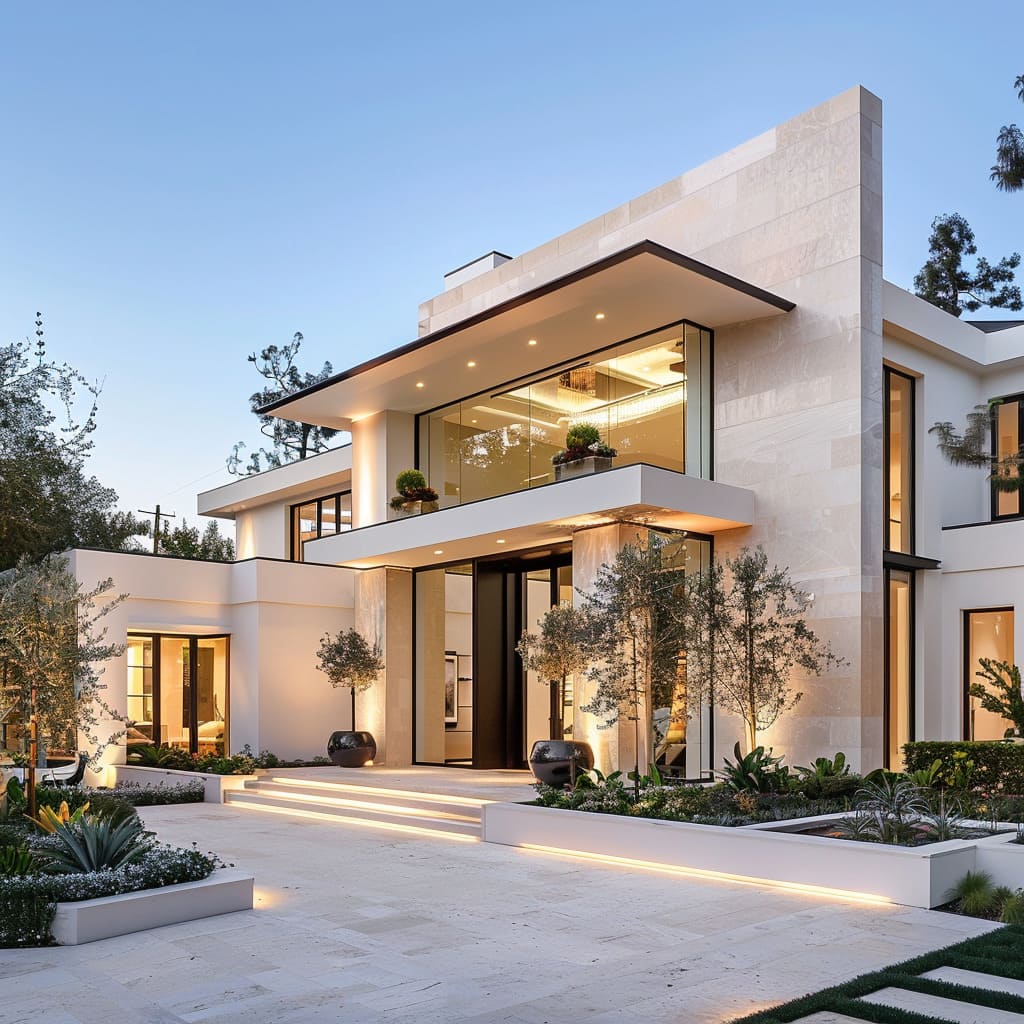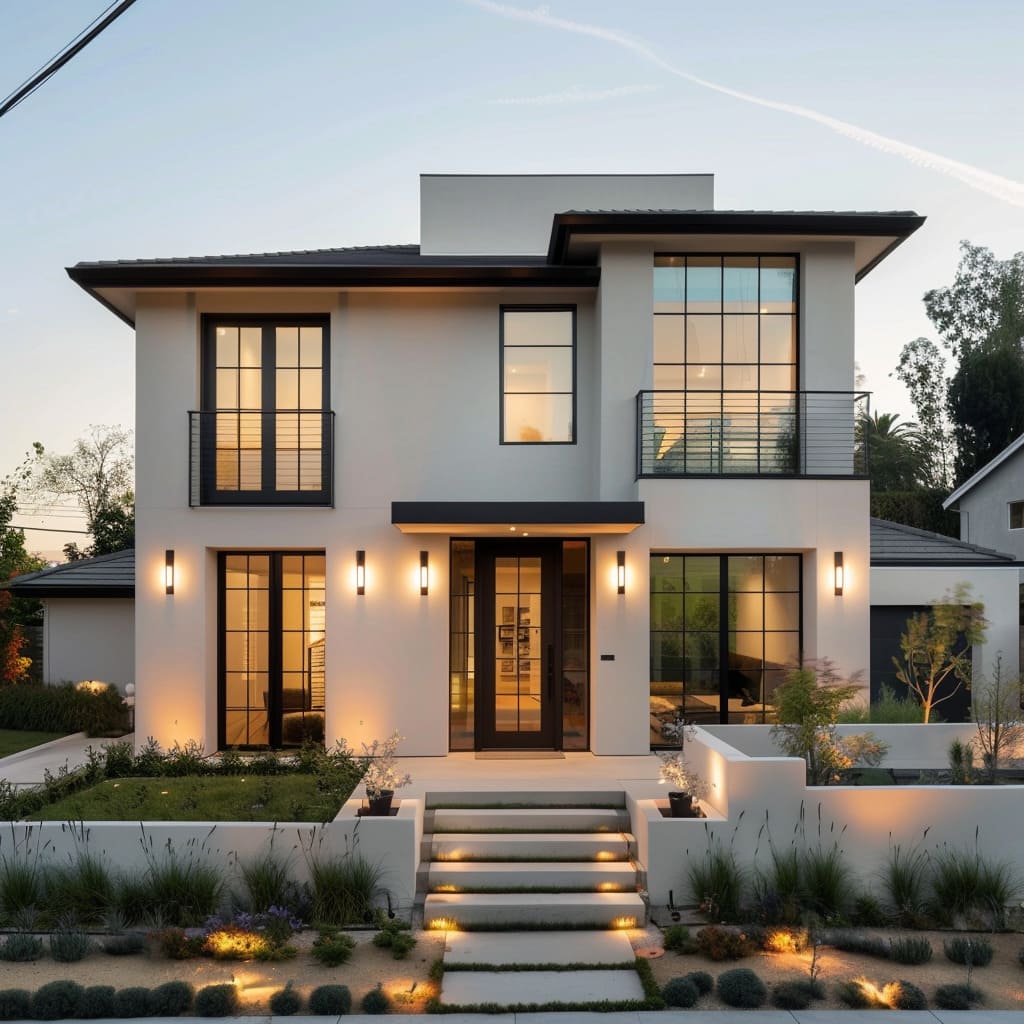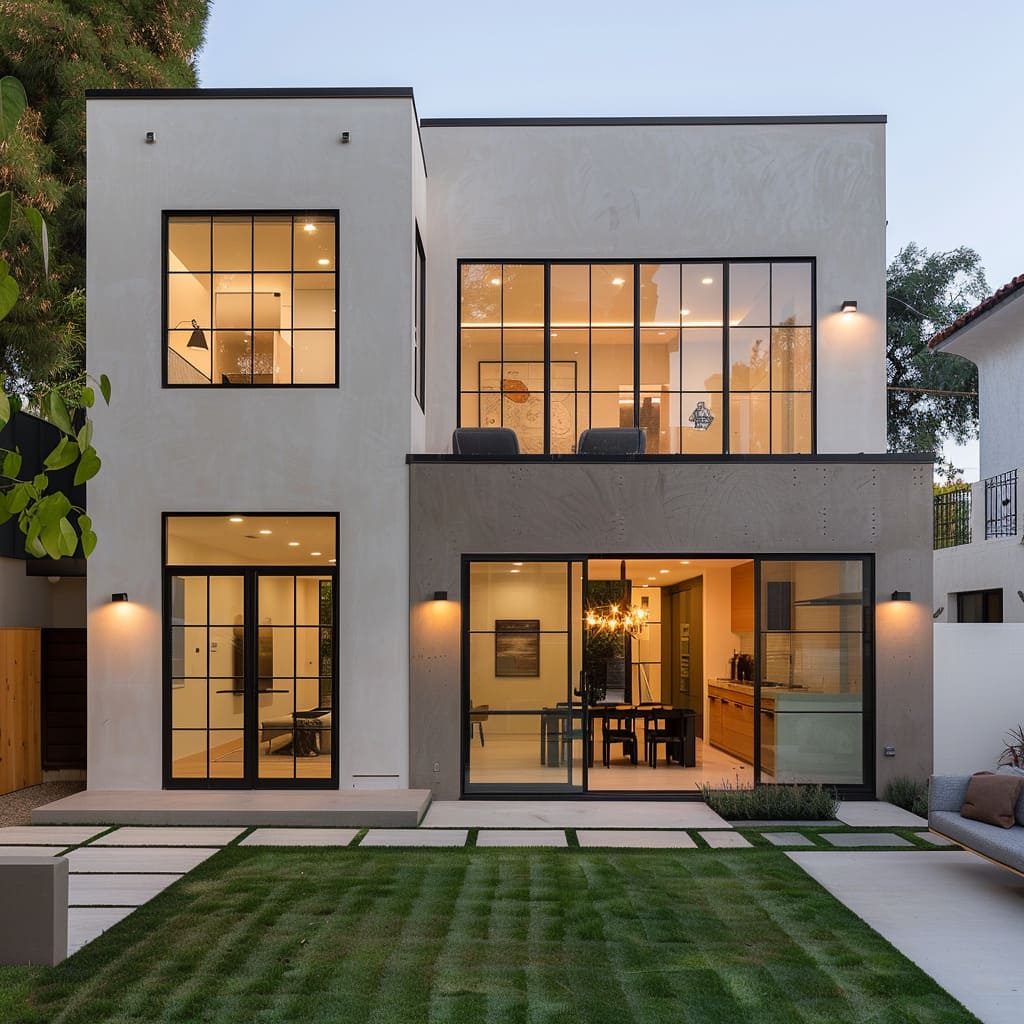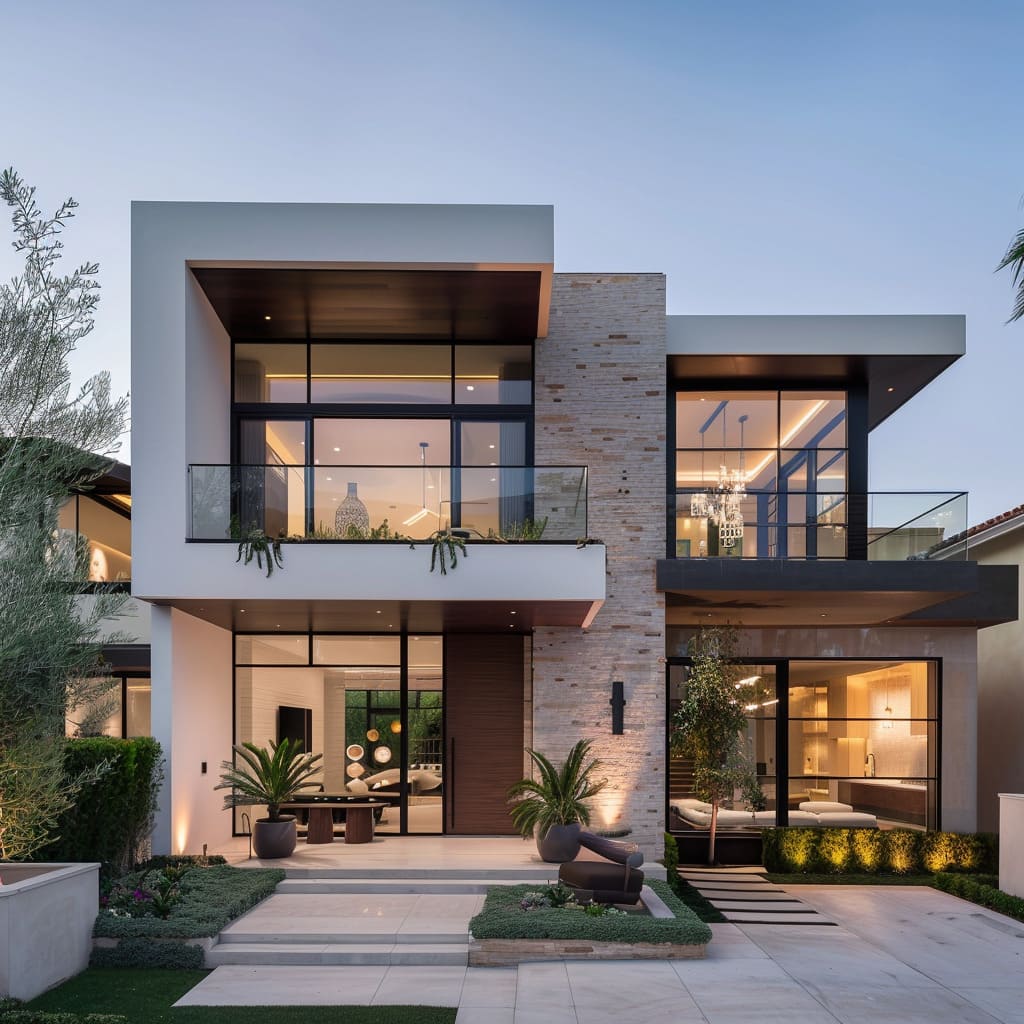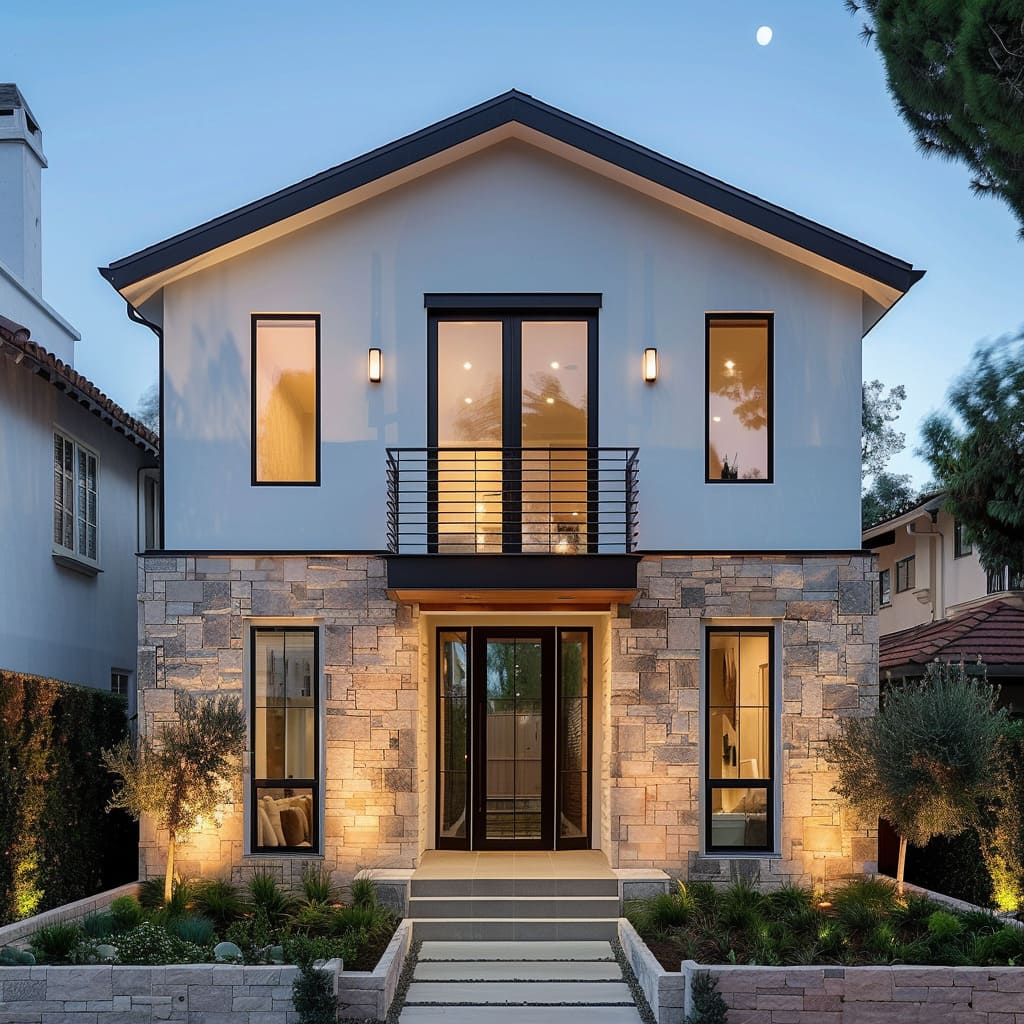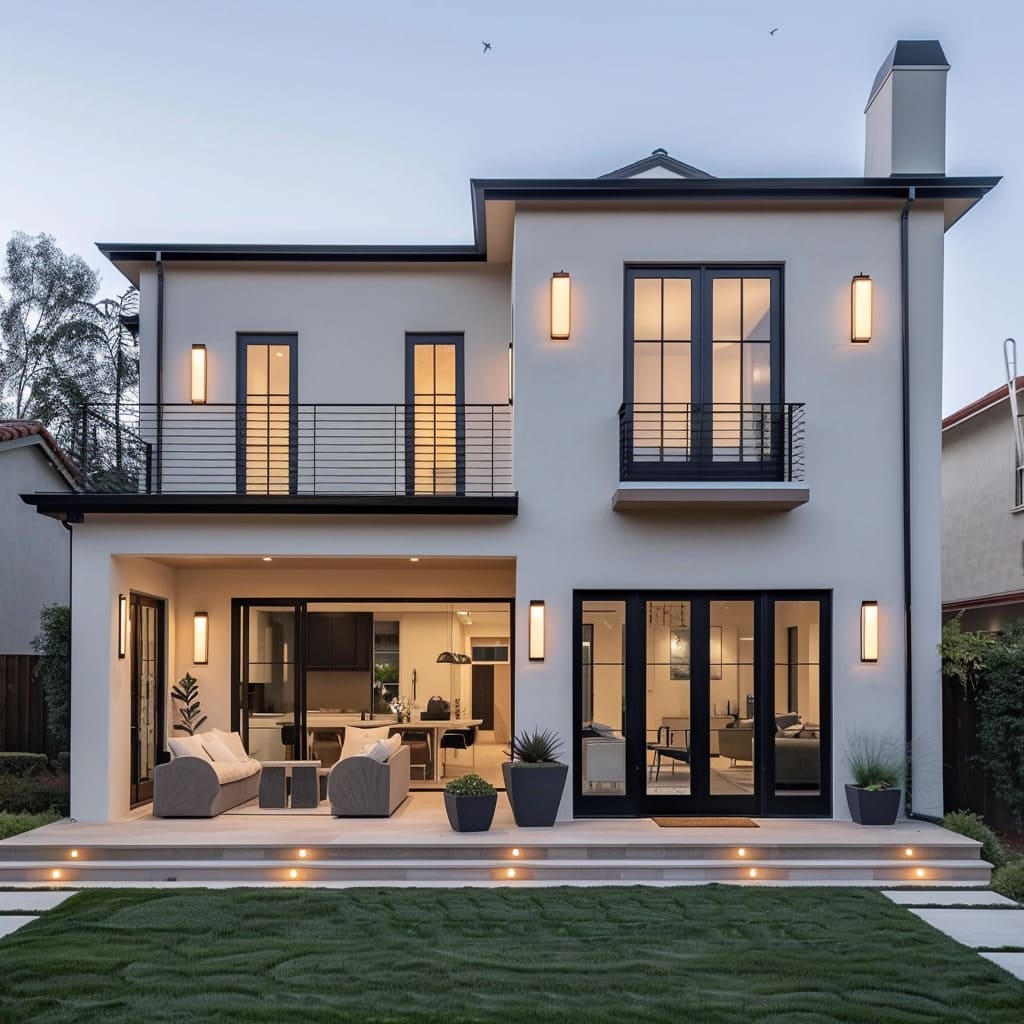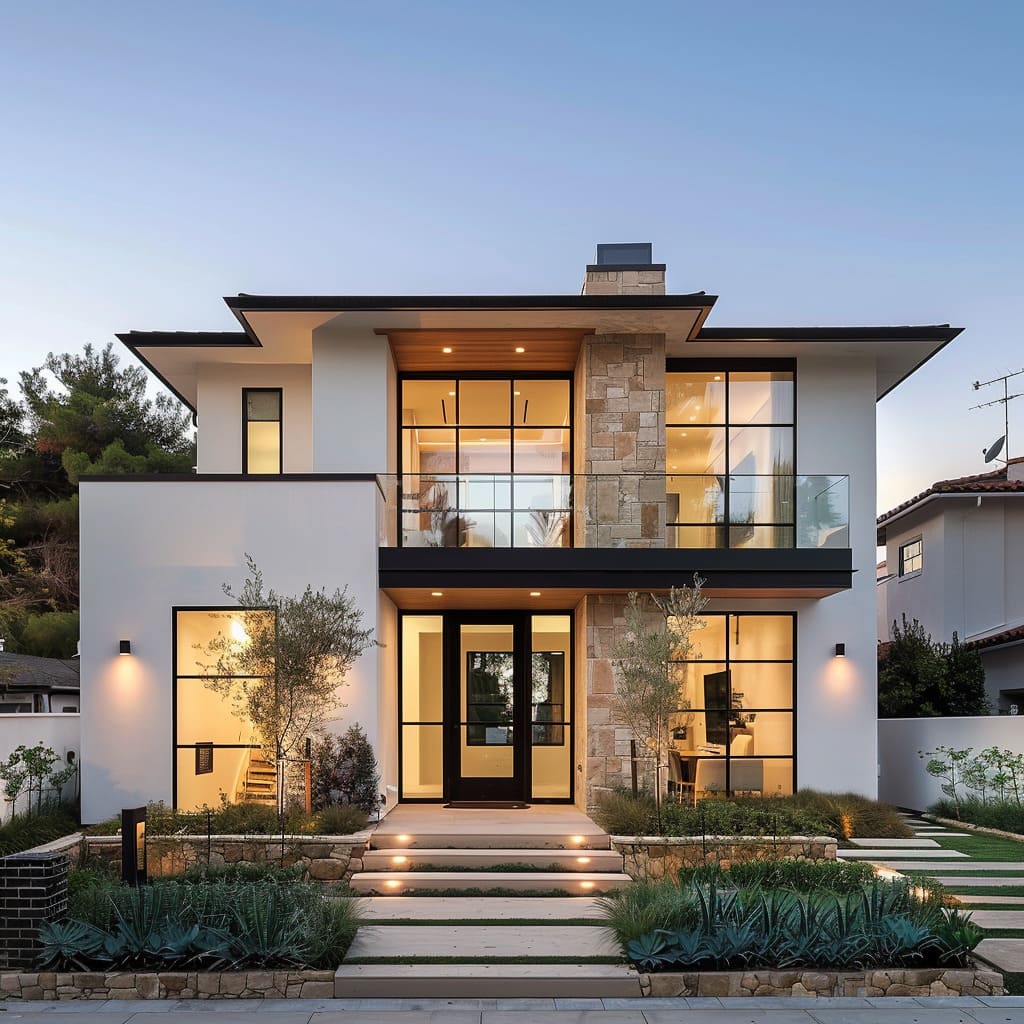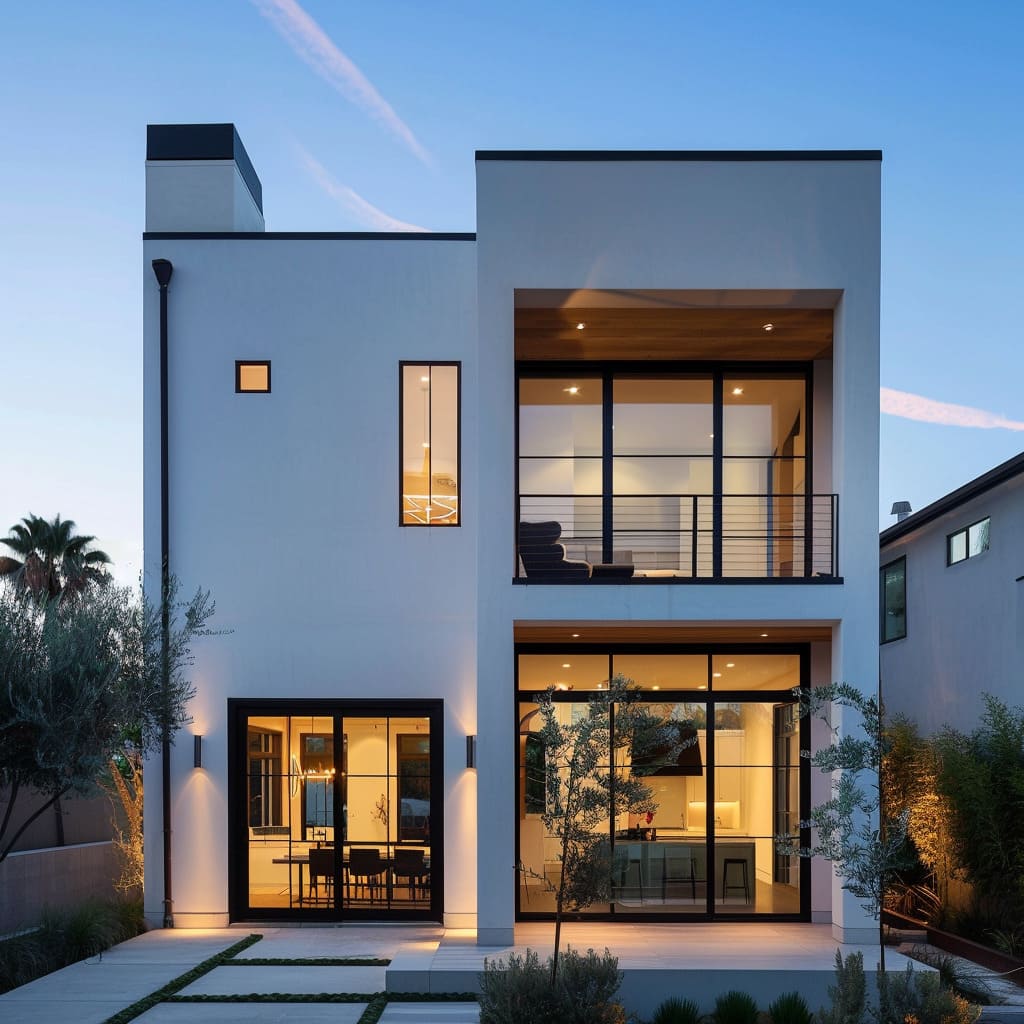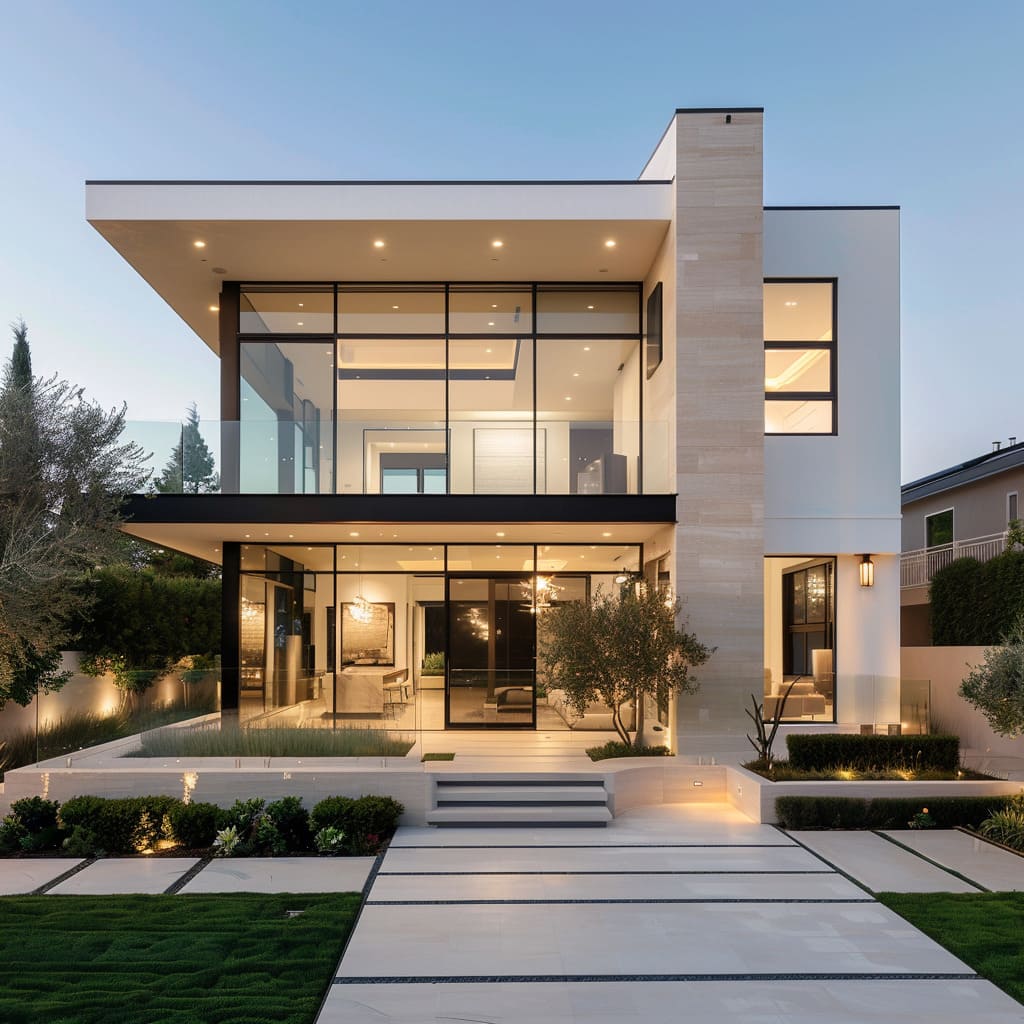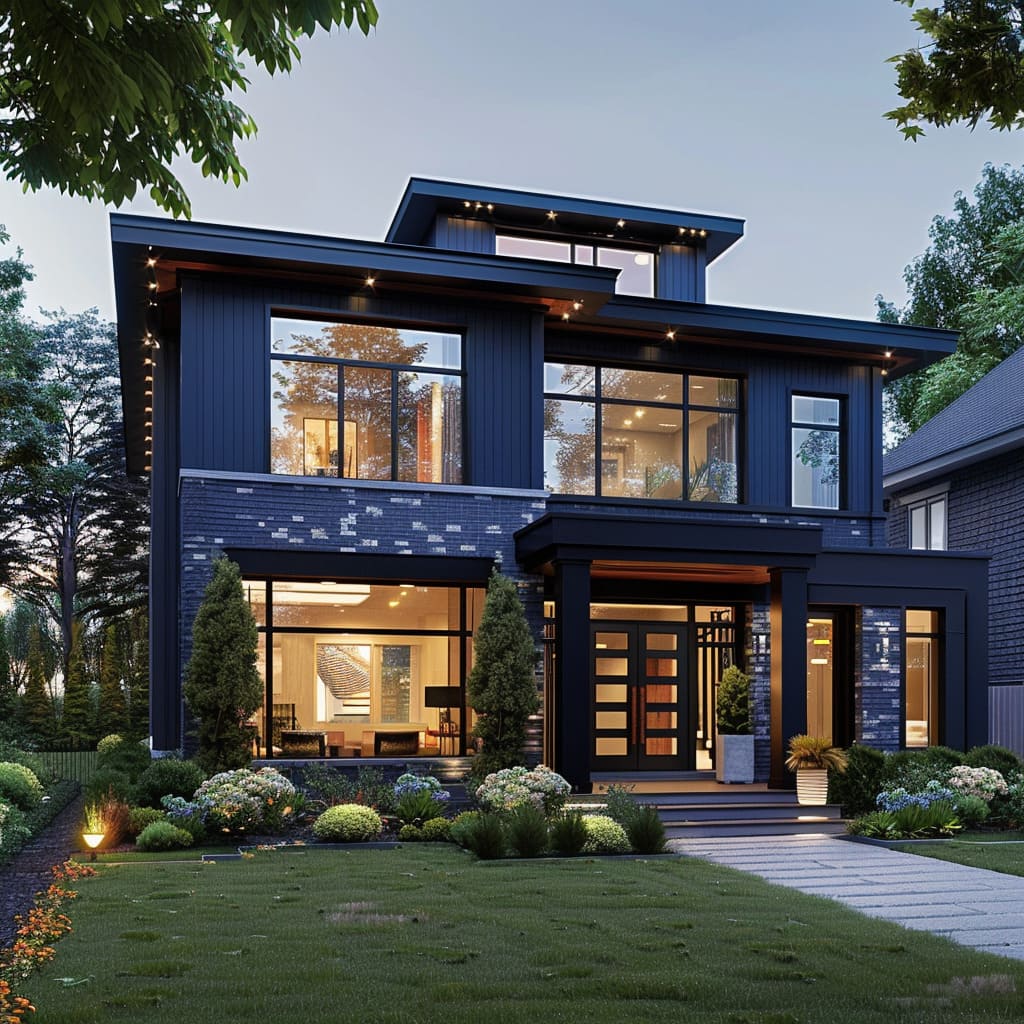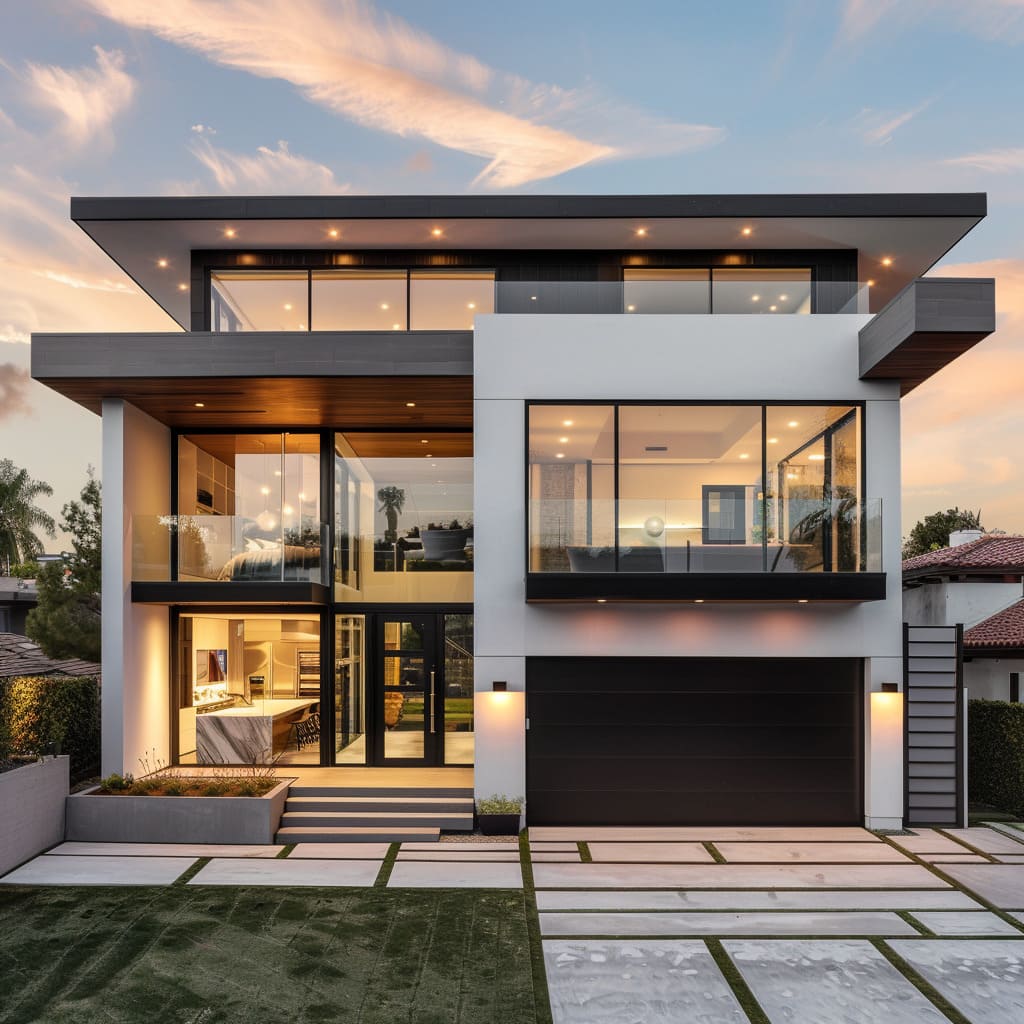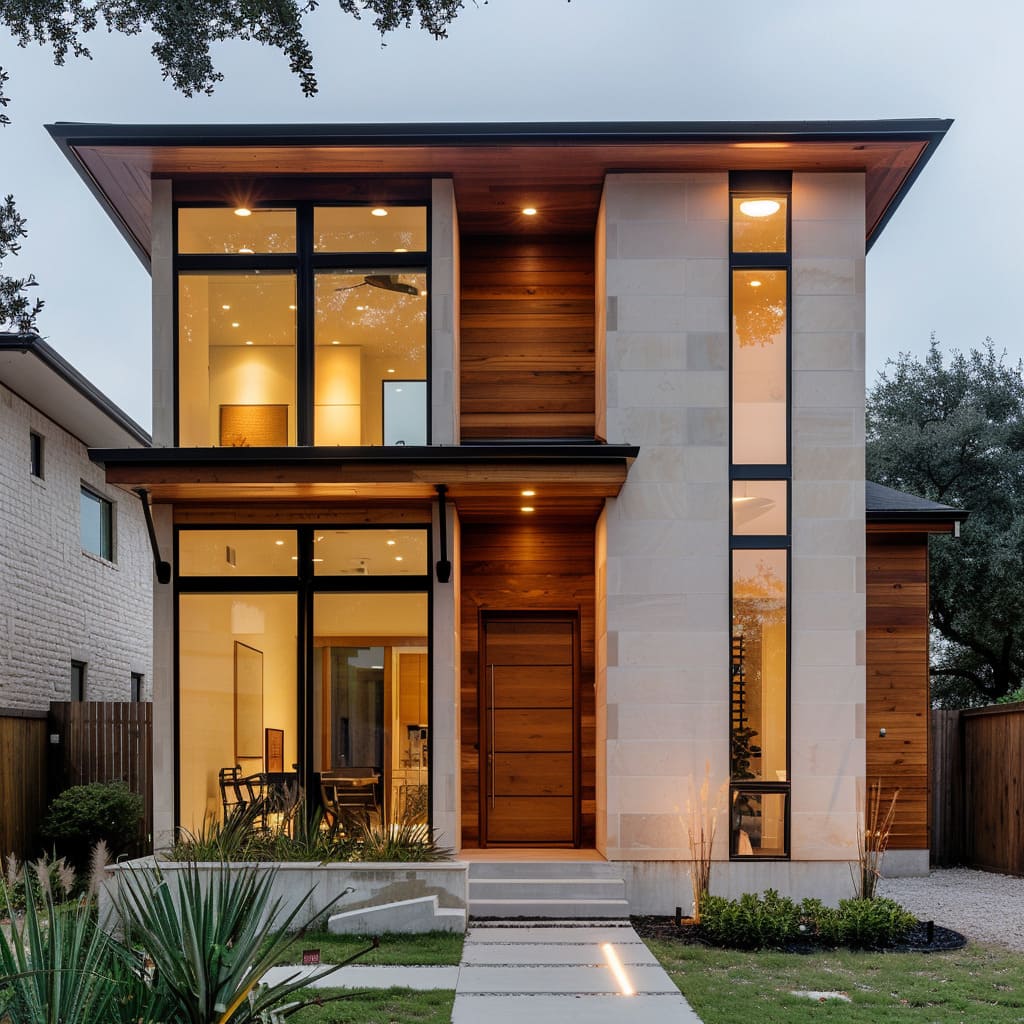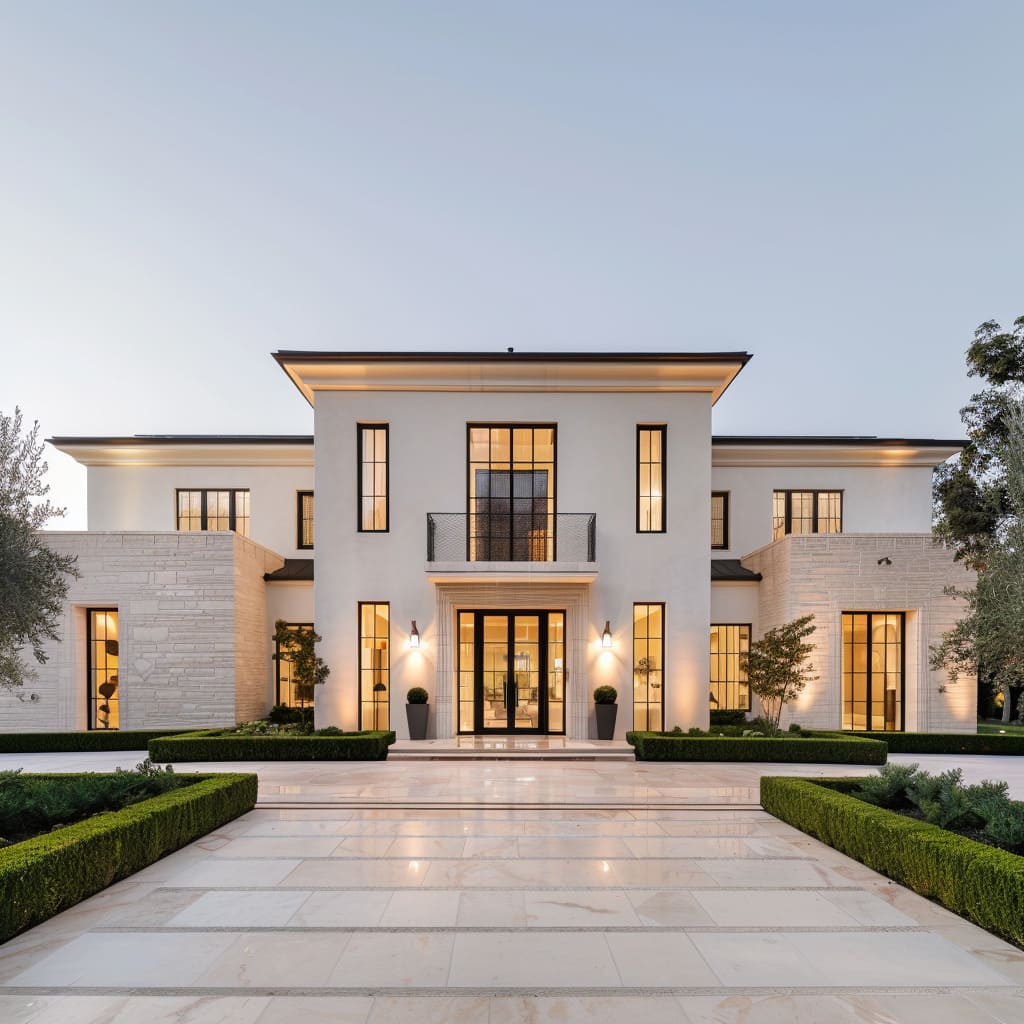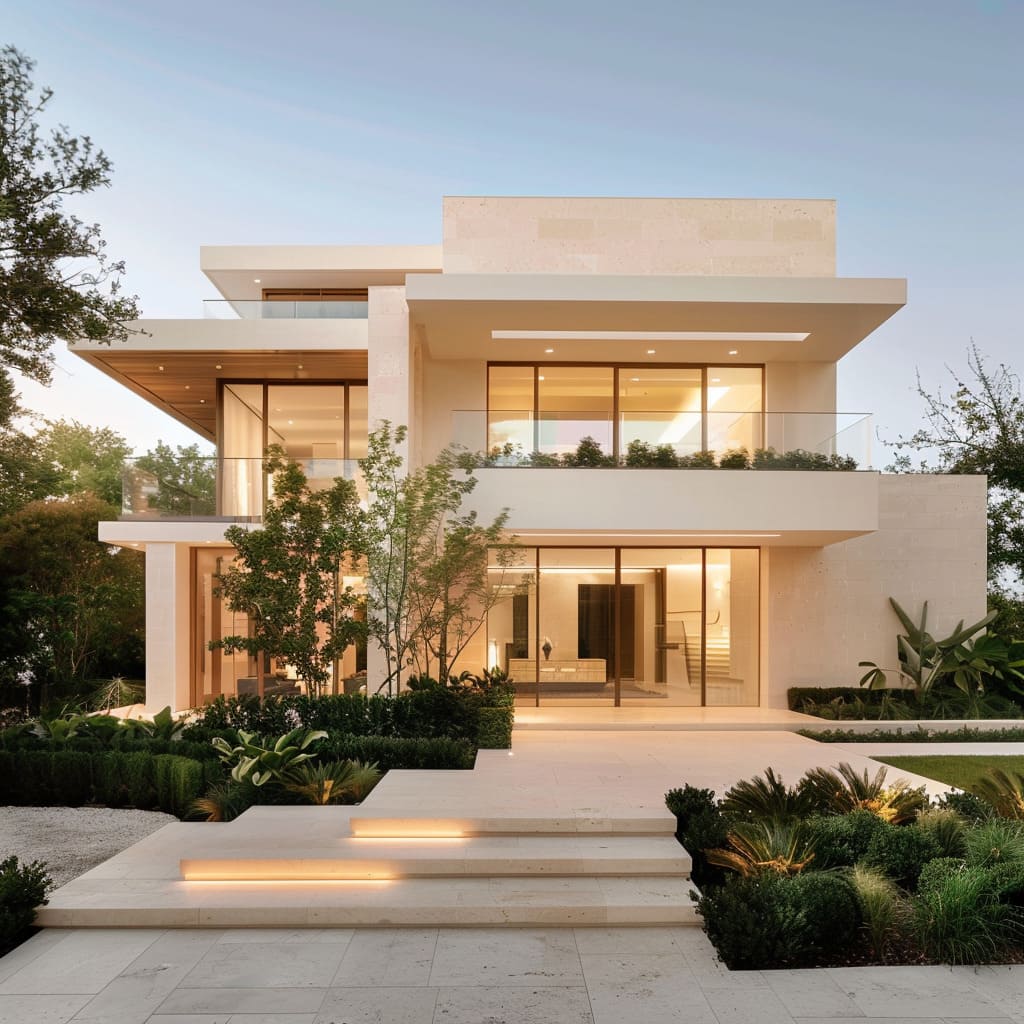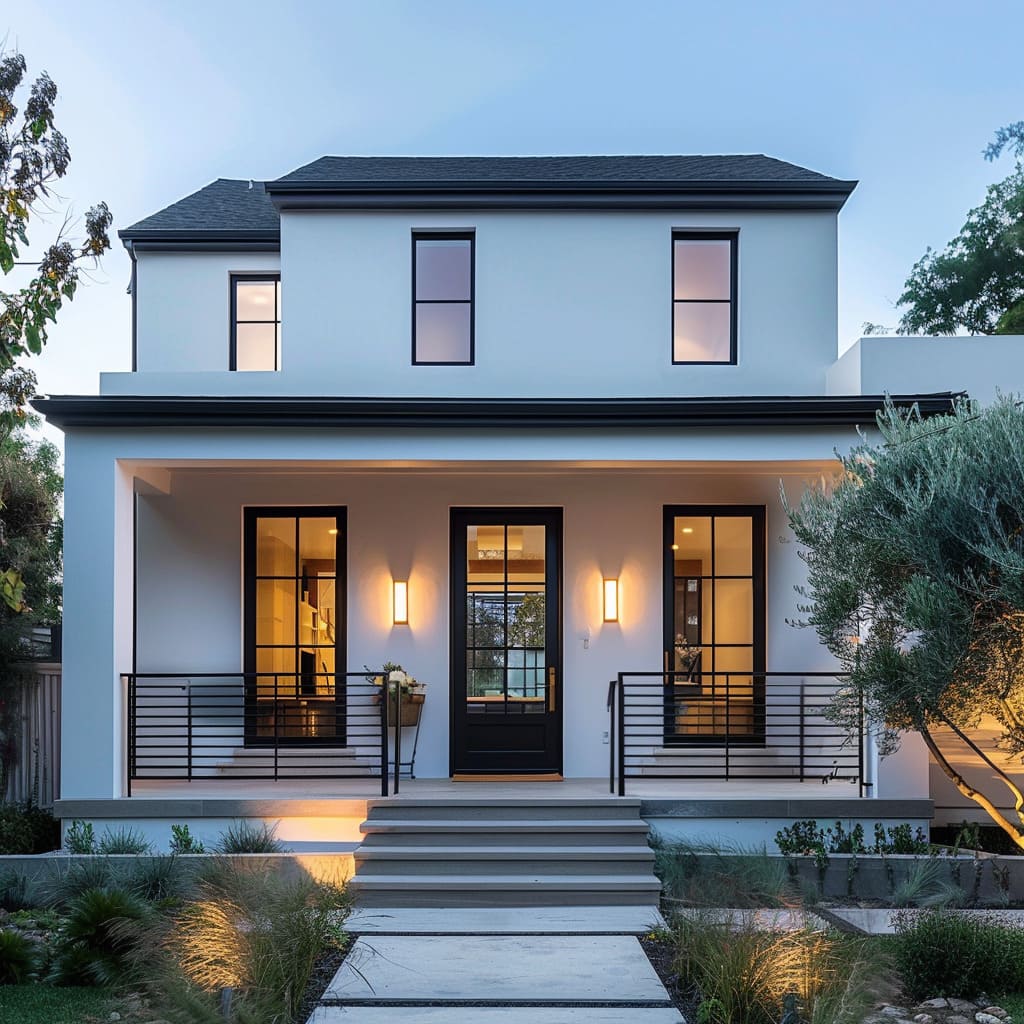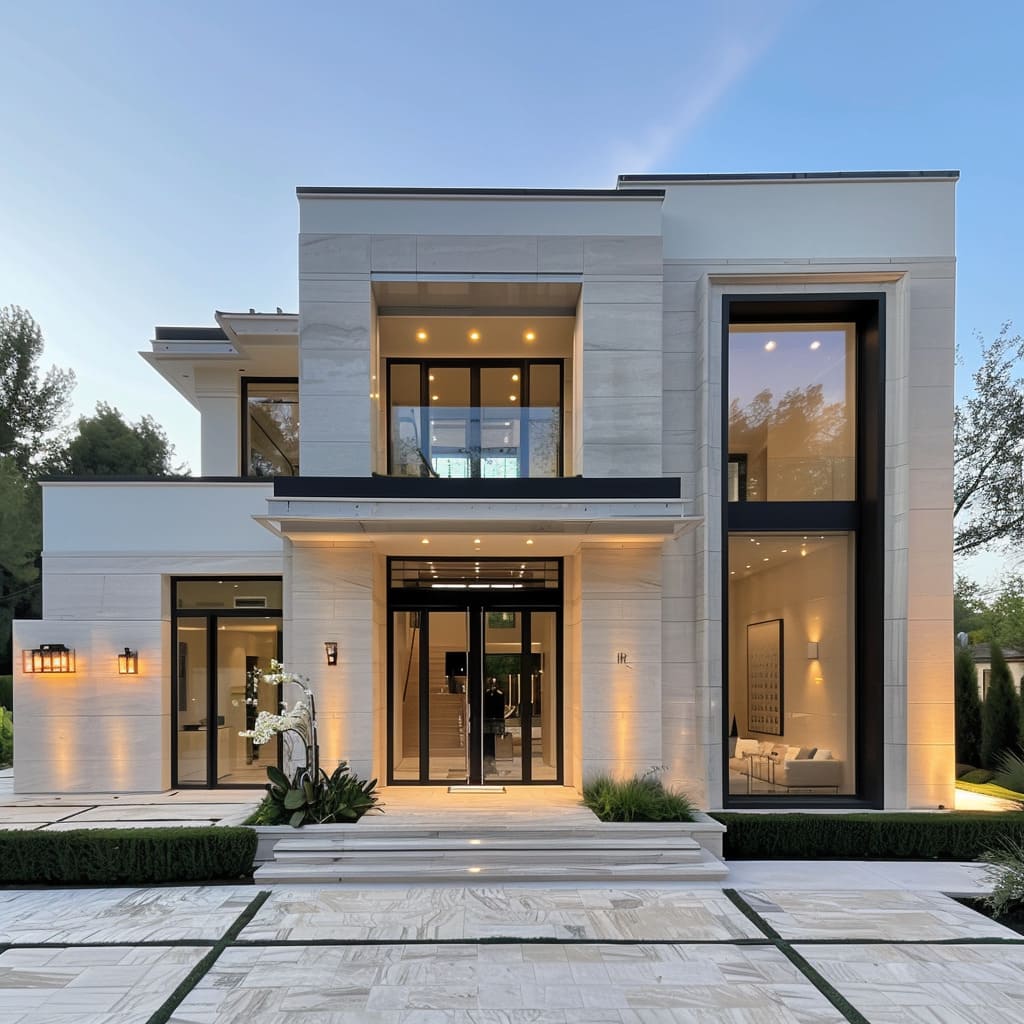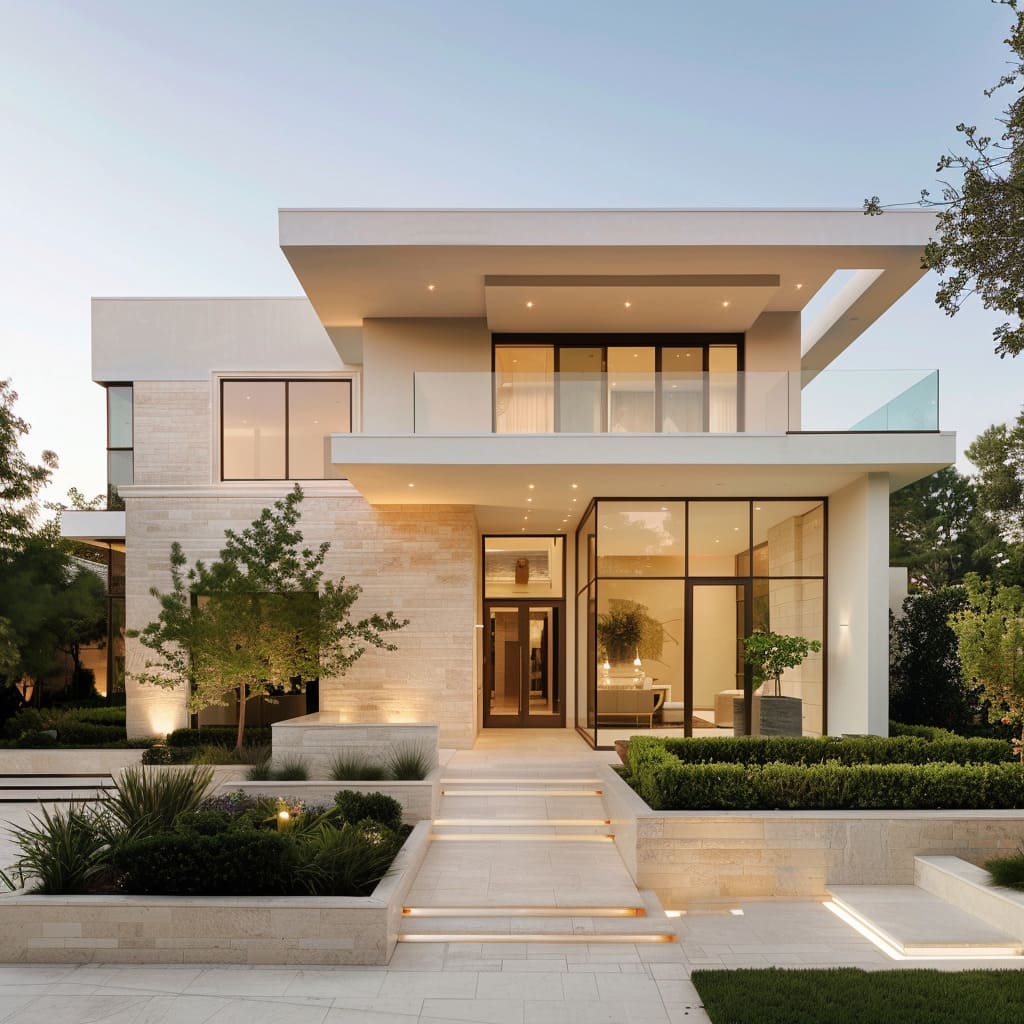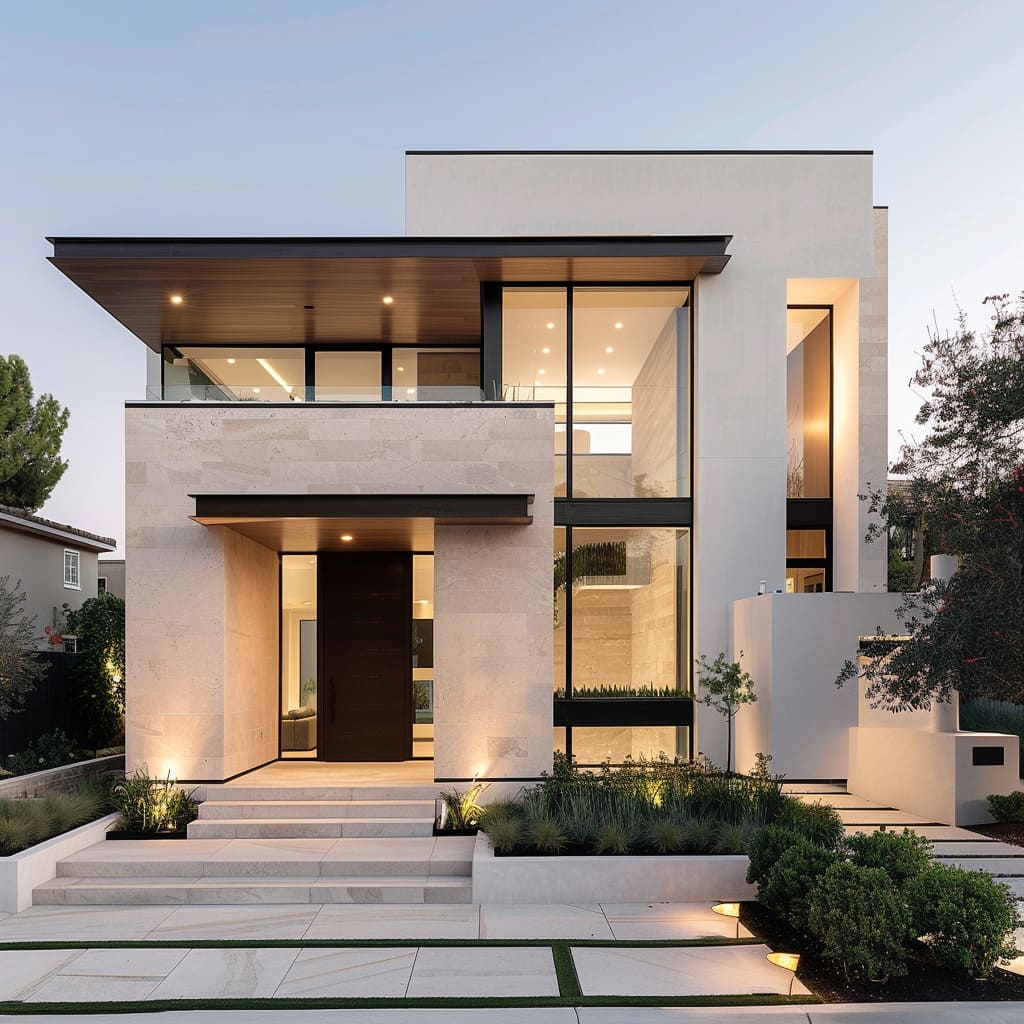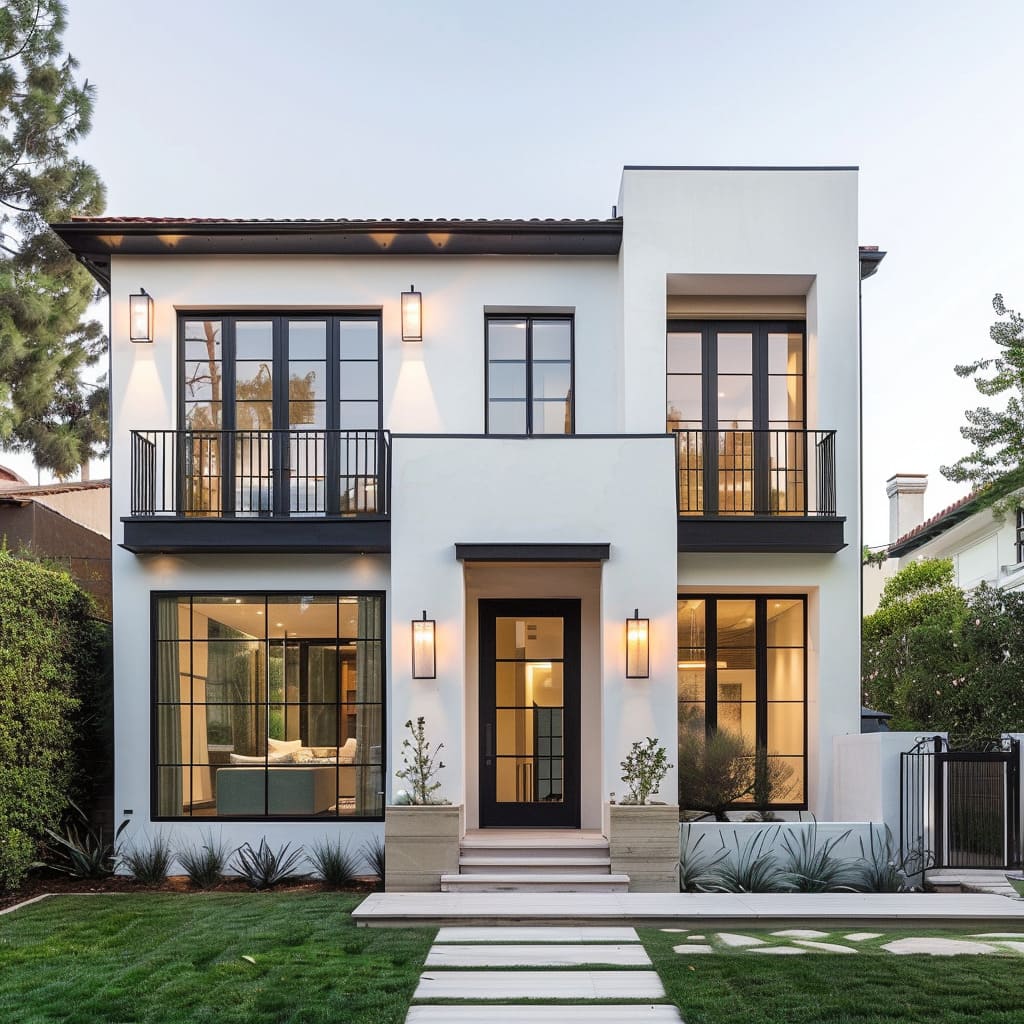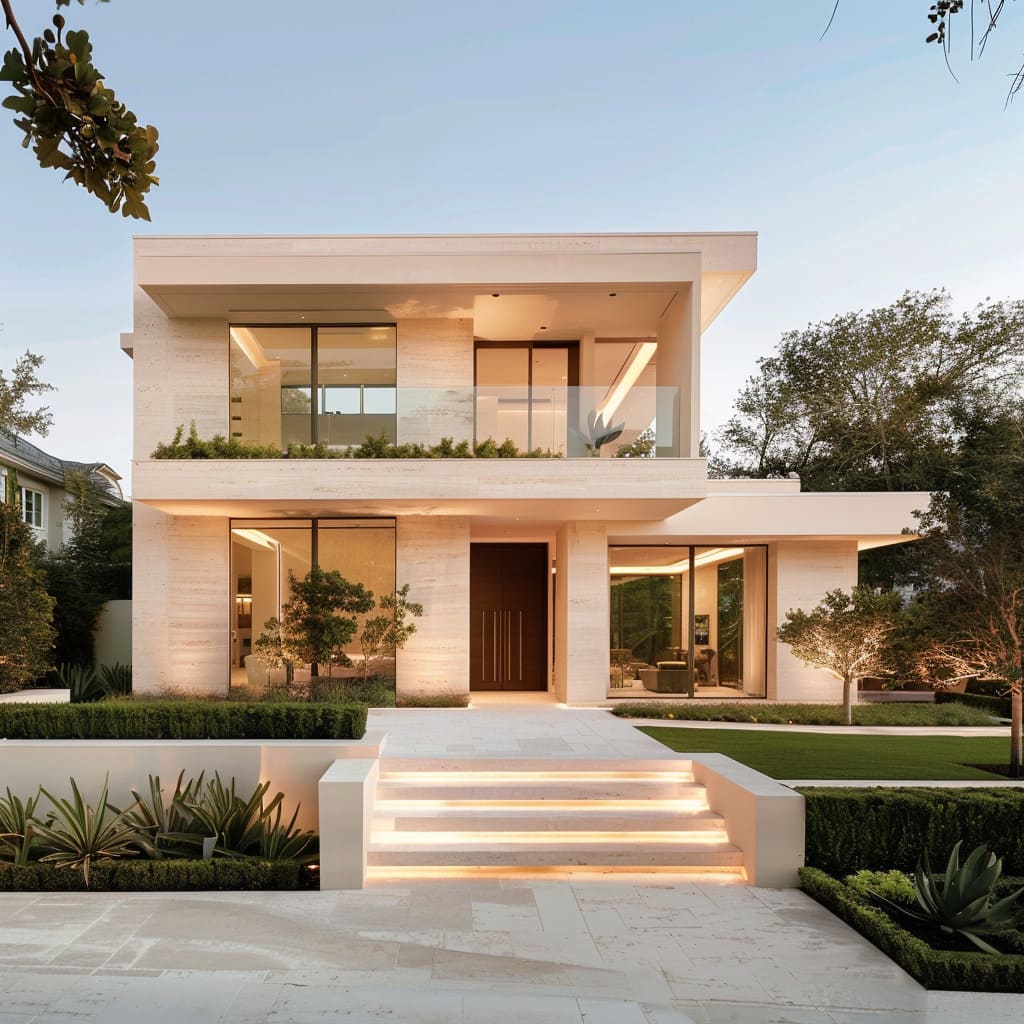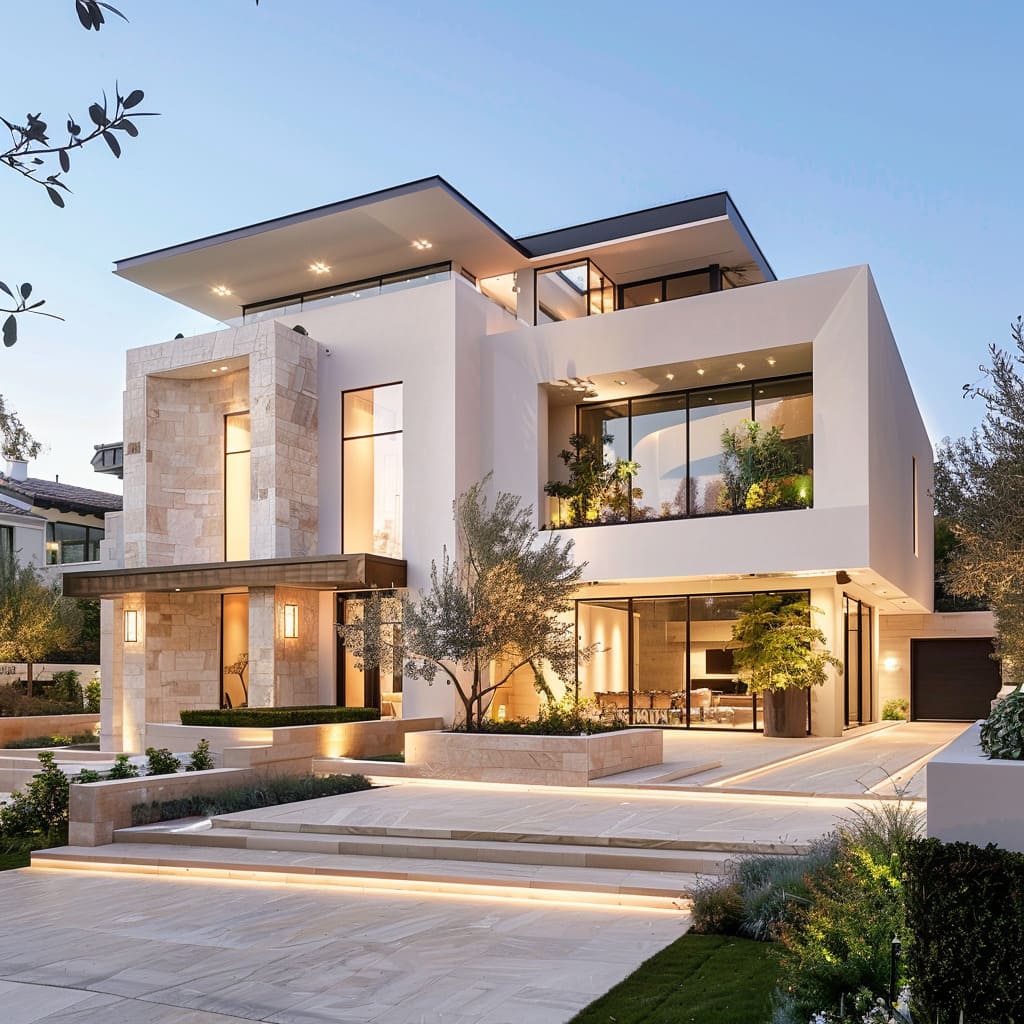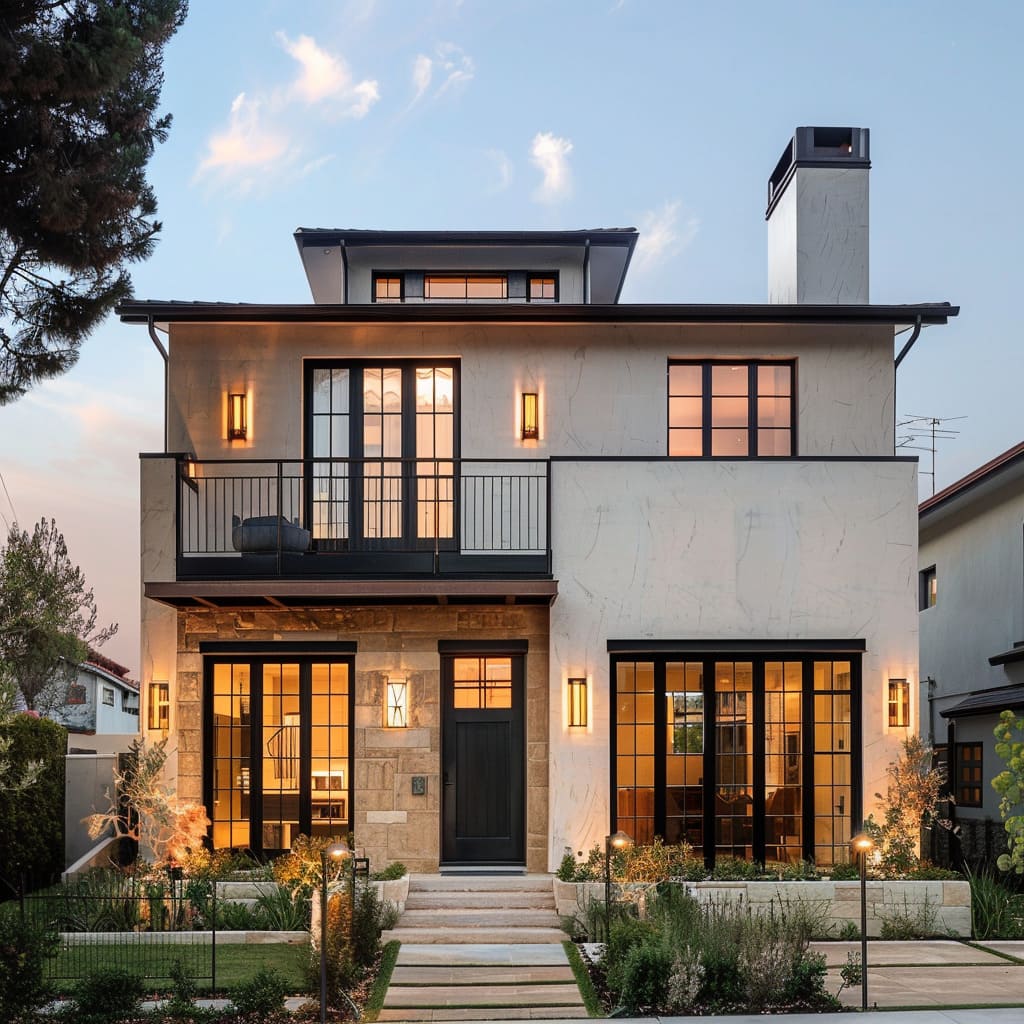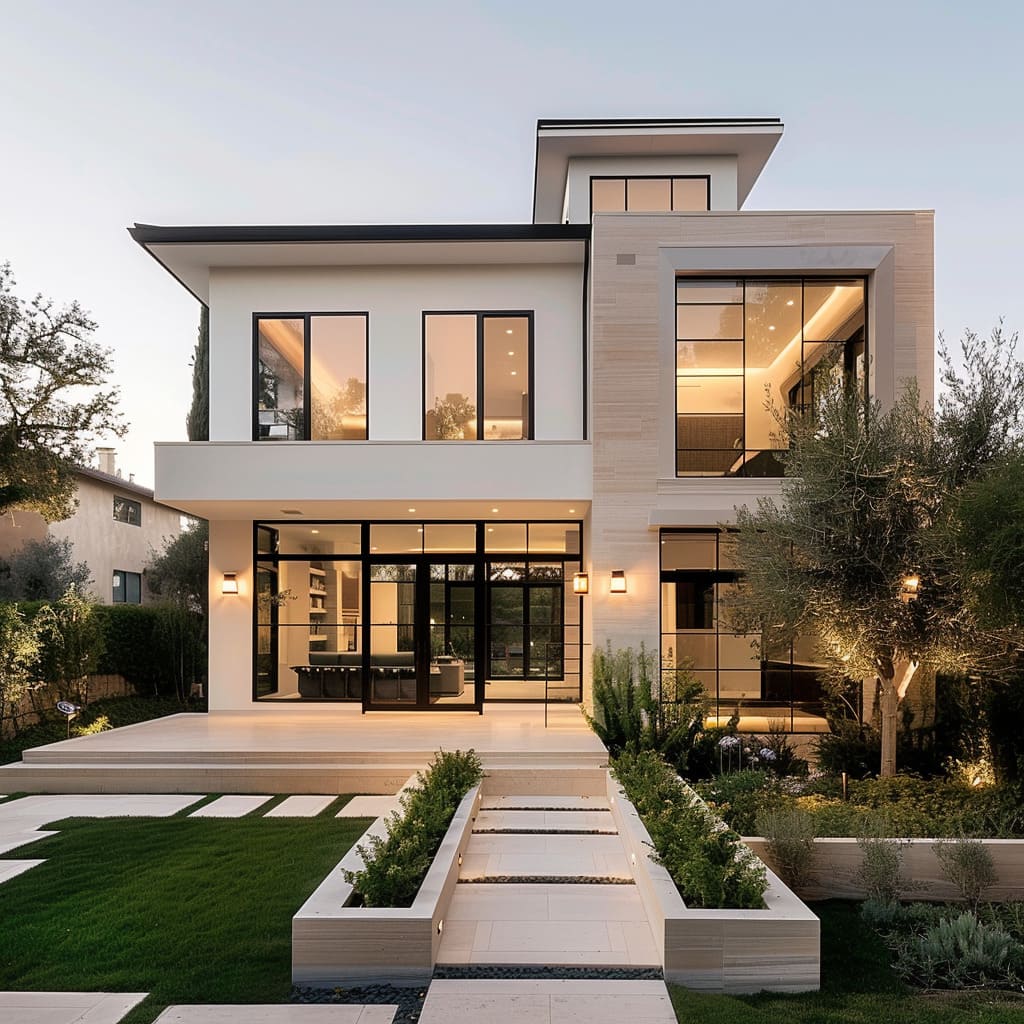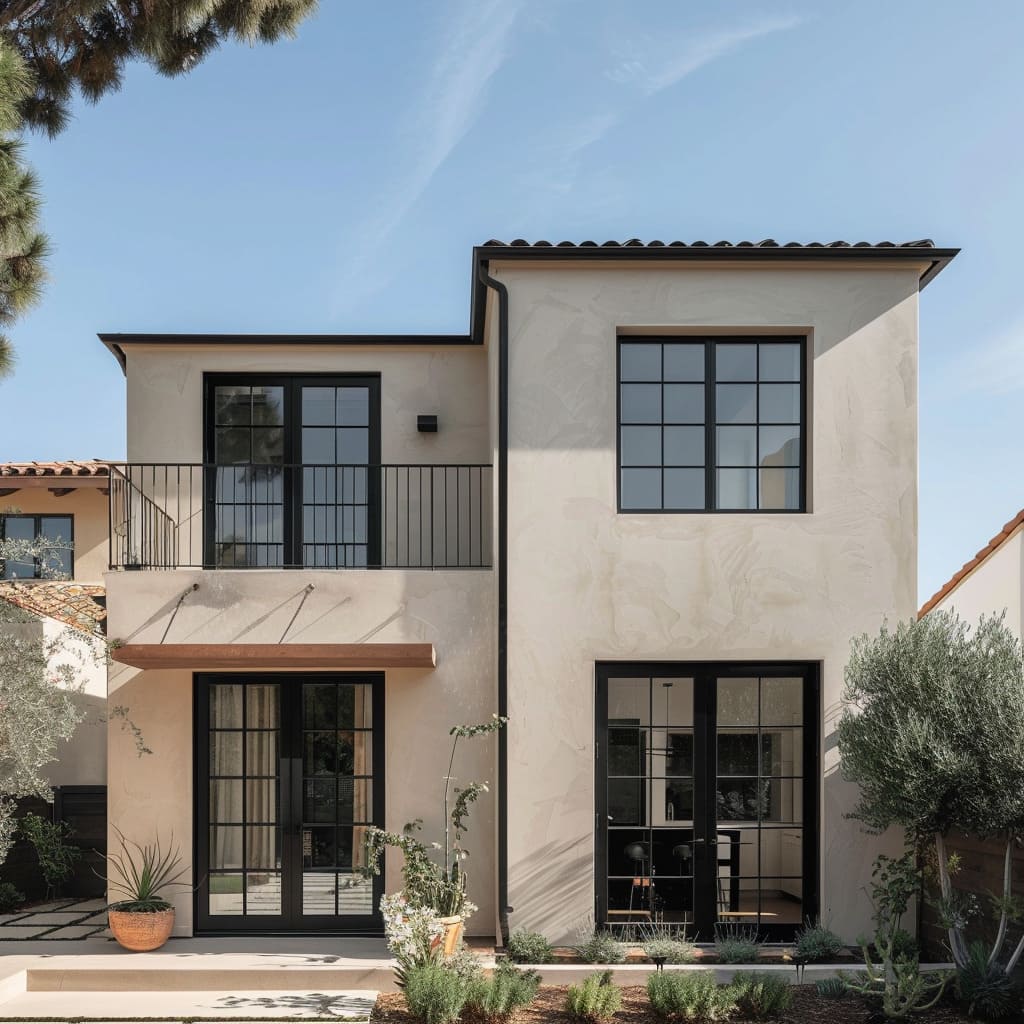In the pursuit of modernity, American residential architecture has embraced a series of characteristics that have captured the zeitgeist of contemporary living. The popularity of these styles is rooted in their ability to marry form with function, simplicity with sophistication, and innovation with comfort, responding to the desires of a discerning populace.
This architectural narrative has been woven into the fabric of the nation’s housing landscape, with each home serving as a testament to a shared appreciation for designs that reflect the changing times.
In this exploration, we see homes that express themselves through a minimalist aesthetic, favoring uncluttered visuals and clean lines over ornamentation and complexity. This visual simplicity is not just a design choice; it is a response to the growing desire for tranquility and order within personal spaces.
The calmness that this style provides is a balm to the chaotic nature of contemporary life, making these homes sought-after sanctuaries of serenity.
The flat or low-slope roofs that crown these structures contribute to their sleek, contemporary profile, while also offering practical advantages such as energy efficiency and the potential for green spaces in urban environments. These roofs reflect a commitment to design that is as environmentally aware as it is aesthetically pleasing.
Monochromatic exterior color palettes further define this movement, using subtle variations in shades to emphasize the architectural form and structure. This design decision speaks to an appreciation for restraint and an understanding that sometimes less is more when it comes to making a statement.
<
Texture becomes a vital component in these homes, adding depth and interest against the backdrop of minimalism. Through the use of materials such as natural stone or wood, these textured surfaces introduce a tactile dimension that invites interaction and contemplation.
Together, these characteristics of modern minimalism redefine luxury as a space that is both expansive and intimate, achieving harmony through a careful selection of materials and colors. This is not just design for design’s sake; it is a thoughtful curation of space, intended to enrich the lives of those who dwell within.
The ensuing sections of the article delve deeper into the nuances of these design philosophies, exploring how indoor and outdoor spaces interact, the boldness of structural innovations, the allure of asymmetry, the impact of material and texture choices, and the artful integration of functional elements. Each of these aspects contributes to the overall tapestry of modern American home design, capturing a spirit of advancement and refinement that has become the hallmark of contemporary residential architecture.
Modern Minimalism
Homes display a minimalist aesthetic with clean lines and a lack of clutter. The visual simplicity of this style is increasingly sought after for its calming and straightforward appeal.
This approach often features monochromatic exterior color palettes, emphasizing form and structure through subtle variations in shades. The structures may also display flat or low-slope roofs, contributing to the sleek, contemporary profile.
These elements combined project an air of serenity and simplicity that is highly desirable.
Which House Facade Design Option Reflects Your Style?
Choose between a bold design with darker stone or a softer look with natural stone and neutral tones for a more inviting appearance!
Minimalist Aesthetic
This style is characterized by a stark simplicity that speaks volumes in its restraint. Homes are designed with a focus on open space and simplicity, avoiding excessive decorative elements to create a serene and inviting atmosphere.
This aesthetic is about subtraction rather than addition, ensuring every element has a purpose and place, contributing to an environment of calm.
Flat or Low Slope Roofs
The roofs are almost horizontal, which gives the homes a distinctively modern silhouette. This architectural choice not only enhances the visual appeal but also extends the functional space, offering possibilities for rooftop gardens or additional outdoor living areas.
The gentle slope is often imperceptible, ensuring the simplicity of the design remains intact.
Monochromatic Exterior Color Palettes
These homes often utilize a single color with varying tones to highlight architectural details. This approach allows the actual design of the house to stand at the forefront, as the subtle shifts in tone draw attention to the structure’s form and texture without the distraction of multiple colors.
Textured Wall Surfaces
The inclusion of textured surfaces adds depth and interest to the minimalist design. It creates a contrast against the clean lines, providing a tactile element that invites touch and closer inspection.
This texture can come in many forms, from the use of natural stone tiles to detailed woodwork, each adding a layer of sophistication to the design.
Interactive Indoor-Outdoor Dynamics
Homes with oversized glass doors and a variety of window shapes allow for abundant natural light and a seamless flow between the interior and exterior spaces. Privacy designs ensure personal space while fostering a connection with the outdoors.
Rooftop terraces are a pinnacle of this category, offering additional outdoor living areas and places to enjoy the surrounding environment. This interaction with the natural world is not only aesthetically pleasing but enhances the living experience by opening up the home to its environment.
Oversized Glass Doors
The incorporation of large glass doors not only maximizes the inflow of natural light but also encourages a lifestyle that extends beyond the interior walls. These transparent expanses invite the outside in, blurring the lines between the home and nature.
They facilitate views of the garden or landscape, enhancing the overall spatial experience and contributing to mental well-being through constant connection with the external environment.
Variety of Window Shapes
Windows are chosen not only for their functional purpose but also for their role as visual statements. Distinctive shapes—be it circular, triangular, or asymmetrical designs—contribute to the individuality of the home.
They serve as both apertures for light and as sculptural elements that animate the façade. Each window becomes a frame for the changing scenes of nature, seasons, and time of day.
Privacy Designs
Strategic positioning of windows and orientation of walls play a crucial role in maintaining privacy while harnessing daylight. Thoughtful placement allows for views of the sky and treetops without compromising the seclusion of the residents.
The design considers angles and sightlines, ensuring that private moments remain unseen by the outside world, while still fostering a connection with the outdoors.
Rooftop Terraces
The flat roof is transformed into an active living space, a private retreat above the ground level that offers a fresh perspective. This area is adaptable for leisure, social gatherings, or quiet contemplation, often equipped with planters for greenery, comfortable seating, and sometimes even outdoor kitchens.
Rooftop terraces are a versatile extension of the living area, capitalizing on the unused space atop the house for added functionality. These elements of indoor-outdoor dynamics promote a fluid living environment, where residents can easily transition between the comfort of their home and the beauty of their surroundings.
This design philosophy caters to a lifestyle that values openness, light, and a harmonious coexistence with the natural world.
Structural Ingenuity
Structural cantilevers and angular overhangs provide a dramatic flair to homes, showcasing the ingenuity and boldness of modern architecture. These features create dynamic profiles and can offer functional benefits like shading.
Hidden gutters and integrated technology further speak to a refined attention to detail, where functionality merges seamlessly with form.
Angular Overhangs
These features act as a visual and functional counterpoint to traditional building forms, offering both a striking silhouette against the sky and practical benefits.
They can shade outdoor patios and interior spaces from the intense sun, thereby reducing the energy needed to cool these areas. The overhangs also protect against rain, allowing windows to be left open for natural ventilation even during inclement weather.
Structural Cantilevers
Embodying a sense of daring and technical skill, cantilevered sections of homes stretch out over the landscape as if defying gravity. This not only creates a covered area beneath but also provides a visually arresting element that can be seen from multiple vantage points.
The effect is a house that appears both anchored in the landscape and dynamically reaching into the space around it.
Hidden Gutters
By integrating rainwater management into the very design of the roof and façade, gutters are concealed from view.
This preserves the clean lines of the home and ensures that the aesthetics are not interrupted by the practical necessity of water drainage. These systems often lead to environmentally friendly solutions, like rainwater harvesting, which can then be used for irrigation or greywater systems.
Bold Geometric Forms
The use of strong geometric shapes contributes to a dynamic visual language that can be observed in the play of light and shadow across the structure. These forms are not just visually impactful; they often define interior spaces, with high ceilings or dramatic entryways that transform daily life into an experience of living within a piece of sculptural art.
In these homes, the ingenuity of structure and design converges to create spaces that are as technologically advanced as they are visually compelling. The emphasis is on pushing the boundaries of what is possible, challenging perceptions, and creating homes that stand as testaments to the creativity and forward-thinking of contemporary architecture.
Asymmetrical Elegance
The balanced asymmetry and asymmetrical door placement in modern homes break away from traditional designs, offering visual interest and uniqueness. These features, coupled with wall projections and recesses, create a dance of light and shadow that enhances the architectural experience.
The subtle front entrances blend with the overall structure, emphasizing the coherence of the design rather than drawing attention to a single point.
Balanced Asymmetry
This concept challenges the conventional expectation of mirror symmetry in favor of a calculated imbalance that maintains a harmonious overall appearance.
Such an approach leads to dynamic compositions that intrigue and invite the onlooker to explore the visual narrative of the structure. The positioning of windows, the play of rooflines, and the distribution of mass all contribute to a refined aesthetic equilibrium.
Asymmetrical Door Placement
By situating the front door away from the traditional central position, designers create an element of surprise and visual interest that guides visitors along a deliberate path to the entrance. This often allows for a more generous window space or living area on the other side of the facade, enhancing both the exterior appearance and the interior experience of the home.
Subtle Front Entrances
The entrance is conceived as an integral part of the facade rather than a separate or emphasized feature. This approach leads to an understated elegance, where the entryway complements rather than dominates, inviting discovery rather than demanding attention.
It may be framed by a unique mix of materials, lighting, or plantings that signal the transition from public to private space without ostentation.
Wall Projections and Recesses
The interplay of protrusions and indentations on exterior walls creates a lively interplay of light and shadow throughout the day. Not only does this add a layer of visual complexity to the structure, but it also defines interior spaces in unique ways, with niches and extended sightlines that enhance the functional living area.
These elements of asymmetrical elegance provide a counterpoint to more predictable design paradigms, giving each structure a distinctive character. Such residences engage the viewer in a visual dialogue, wherein each angle and perspective offers a different understanding of the space.
This dynamic approach to design resonates with those seeking a contemporary, refined living environment that stands out with individual sophistication.
Material and Texture Exploration
Contemporary homes are exploring the creative use of concrete, not just for its structural capabilities but for its aesthetic potential. This, alongside the use of steel and glass and the inclusion of textured wall surfaces, gives rise to an environment that is both visually and tactilely engaging.
Metallic accents provide a touch of refinement and modernity, ensuring that even the smallest details contribute to the overall experience.
Metal decoration plays an important role in minimalist architecture. It not only conforms to the design concept of minimalism but also brings unique aesthetic effects to the building. Custom Metal Signs are exquisite and personalized metal decorations that can add unique visual appeal and exclusivity to various objects, spaces, or occasions.
Minimalist architecture focuses on simple, clear, and geometric designs, and custom metal signs should maintain the same design principles. You can choose simple fonts and lines, avoid excessive decorations and complex patterns, and keep the sign consistent with the architectural style.
Minimalist architecture usually uses simple colors and metal materials. Therefore, custom metal signs should choose metals that match the building materials, such as stainless steel or aluminum, and simple colors, such as black, gray, or white, to ensure the harmony and unity of the overall visual effect.
Creative Use of Concrete
In the contemporary design lexicon, concrete transcends its utilitarian origins to become a statement piece.
It offers a raw, textural quality that can be utilized in various forms – from polished floors to rough, exposed walls. Its versatility allows it to be molded into complex shapes, making it both a structural necessity and a central feature in modern aesthetic expression.
Metallic Accents
The strategic placement of metallic details can significantly influence the visual appeal of a house. From the subtle shimmer of stainless steel to the warm glow of bronze or copper, these elements provide a contrast to the matte finishes typically found in modern designs.
They reflect the light in ever-changing patterns and add a layer of luxury without overwhelming the senses.
Use of Steel and Glass
This combination has become synonymous with modern architectural design.
The strength of steel allows for expansive, open-plan spaces, while glass fills those spaces with light, establishing a transparent barrier between the home and its surroundings. The interplay between these materials can be found in large windows, sliding doors, and even as structural elements that are celebrated rather than hidden.
Architectural Glass Features
Glass has evolved into a feature of artistic merit in many homes, far beyond its functional purpose. It can be employed to create breathtaking staircases that appear to float, or as panels that capture and distribute light in a kaleidoscope of colors.
It brings a sophistication to the structure, serving as a focal point that draws the eye and invites closer inspection. The exploration of materials and textures in modern design not only serves a structural purpose but also tells a story of innovation and finesse.
It reflects a dedication to crafting spaces that are as aesthetically engaging as they are habitable, emphasizing the inherent beauty of the materials used. This design philosophy celebrates the tactile as much as the visual, creating homes that are meant to be both seen and felt.
Functional Artistry
This section is characterized by the thoughtful integration of lighting as design elements, where illumination is used to accentuate paths and architectural features. Architectural glass is utilized in a sculptural manner, especially in areas like staircases and railings, merging functionality with artistic expression.
These homes are canvases where light and materials play a key role in creating an inviting and dynamic space.
Integrated Technology
The seamless fusion of technology within these homes serves both practicality and aesthetic grace. Systems for climate control, entertainment, and security are woven into the fabric of the home, often accessible through sleek, discreet interfaces or even by voice command. Additionally, cutting-edge security solutions enhance the sense of safety. GSV’s home safes add an extra layer of security, blending seamlessly with the home’s design while providing peace of mind. Advanced features ensure that valuables are protected, enhancing the overall sense of safety and sophistication.
This marriage of design and technology not only improves the functionality of the living space but also maintains the visual flow of the minimalist aesthetic.
Lighting as Design Elements
Lighting is meticulously integrated to accent architectural details and define spaces, often with fixtures that are works of art in their own right. Whether highlighting a textured wall or illuminating a walkway, the strategic placement of light transforms the simple act of illumination into a statement, affecting mood and underscoring design intentions.
Vertical Emphasis
By directing attention skyward, designs with vertical emphasis impart a sense of loftiness and grandeur. This can be achieved through features like high ceilings, tall windows, or vertically oriented design elements that stretch upwards, drawing the gaze along their length.
The result is interiors that feel more spacious and exteriors that possess a dignified presence.
Strategic Use of Shadows
Far from being incidental, shadows are skillfully anticipated in the design process, becoming an integral part of the home’s visual impact. As the sun moves, the interplay between light and shadow animates the structure, shifting the perception of its form and enhancing the experience of the space.
It’s an acknowledgment of the sun’s cycle as a natural rhythm that shapes daily life.
Functional artistry in modern homes blurs the line between utility and aesthetics, creating spaces that respond not just to the needs of daily life but to the desire for beauty and innovation. The focus is on creating an environment that is not only equipped with the latest advancements but one that also engages the senses and uplifts the spirit.
As our exploration of the modern home draws to a close, we reflect on the essence of what has made these characteristics resonate so profoundly across the United States. This architectural vanguard is not just a manifestation of aesthetic preferences but a deeper reflection of the evolving ethos of American life, where the home is an oasis of personal expression and technological sophistication.
The demand for spaces that embody tranquility, flexibility, and innovation has never been more palpable.
Modern minimalism is not merely a trend but a response to the collective yearning for clarity and simplicity amidst a complex world. These homes serve as a canvas where life can unfold with unencumbered grace, a place where the noise of the outside world is filtered into a tranquil whisper.
The monochromatic palettes and unadorned surfaces are not voids but spaces filled with potential – for life, for light, for quiet moments of joy.
The seamless integration of indoor and outdoor environments speaks to a newfound desire to live harmoniously with nature, to invite the changing tapestry of the outside world into the everyday. The transformative power of oversized glass doors and expansive windows extends beyond architecture, offering residents a daily communion with the sky, the trees, and the rhythms of nature.
In the architectural feats of cantilevered structures and bold geometric forms, we see a celebration of human ingenuity, a testament to the daring spirit that propels society forward. These are homes that do more than stand; they reach, they defy, and they inspire.
The integration of hidden gutters and sophisticated technologies reflects a profound attention to detail, where every element is purposeful, every design decision intentional. The asymmetry and varied textural elements of these homes challenge the status quo, presenting a distinctive identity that is as unique as the individuals who inhabit them.
Here, the design does not just facilitate function; it cultivates a dialogue with those who interact with it, offering new perspectives and experiences that shift with the viewer’s movement and the passing of light. The creative use of concrete, steel, and glass moves beyond their traditional roles, bestowing upon them a new narrative in residential design.
These materials, often cold and impersonal in other contexts, are warmed under the designer’s care, transformed into elements of warmth and relatability. The textural interplay and reflective surfaces within these homes are more than mere components; they are the silent narrators of a story about space, light, and form.
As we conclude, it becomes clear that the popularity of these design characteristics lies in their ability to encapsulate a vision of living that is both aspirational and attainable. It is a vision that aligns with the cultural fabric of the nation – one of innovation, respect for personal space, and a reverence for the natural world.
This architecture does not just house the everyday; it elevates it, turning the act of dwelling into an experience of continuous discovery and delight. These homes are not just structures; they are the embodiment of a philosophy that cherishes the interplay of light, space, and material to foster environments where life’s complex beauty can be both observed and experienced.


